Time in a Bottle
The 1970s. What if smartphones had existed back then? The old VHS recordings of memories—your parents' lifeless, soulless archive of absence, physically present but emotionally vacant and disconnected.
Blank faces, downturned heads. A dull glow illuminating their expressions as they scroll through mindless nonsense.
This project is a visual time-travel experiment, exposing the stark contrast between a life lived and a life observed through a screen.
A warning. A reflection. A question: What kind of legacy are we leaving behind?
Inspired by The Anxious Generation: How the Great Rewiring of Childhood Is Causing an Epidemic of Mental Illness, book by Jonathan Haidt.
Process:
Midjourney used to create a Moodboard with about 50 images from the 70's from photo albums from my parents which I had archived a long time ago. By training a model, I created a style code used to create new scenes in the style and vibe of old photos. I ran motion tests in heaps of platforms from Runway, Sora to Hailuo, Kling etc and the best results for this type of hand held motion came from Luma by far.
Midjourney used to create a Moodboard with about 50 images from the 70's from photo albums from my parents which I had archived a long time ago. By training a model, I created a style code used to create new scenes in the style and vibe of old photos. I ran motion tests in heaps of platforms from Runway, Sora to Hailuo, Kling etc and the best results for this type of hand held motion came from Luma by far.
Images :: Midjourney
Vid Gen :: Luma AI
Time in a Bottle :: Jim Croce
Vid Gen :: Luma AI
Time in a Bottle :: Jim Croce
Little Star
Our children are little stars, stars that will one day grow into adults who shine brightly. The decline of play-based childhood has created a cloud of darkness.
Unfortunately, the rise of smartphones and social media platforms has contributed to this, causing sleep and social deprivation, cognitive fragmentation, and addiction. The impact on mental health is obvious when you look around and observe.
We are responsible for their well-being until they can make their own mature choices. With more knowledge, we can help limit the damage and shed light on the questions we need to ask ourselves. It's up to us.
No humans were filmed in the making of this video.
Created with Runway and Kling. Little Star by Stina Nordenstam
Inspired by The Anxious Generation by Jonathan Haidt
The advancement of AI technology poses new challenges for our little stars.
Tesla Concept Ad
This project is not endorsed by Tesla. This is not a real ad. This is purely an exploration in new AI video tools, RunwayML and Luma Dream Machine.
Most of the shots were generated in RunwayML, some shots were generated in Midjourney and then animated in Luma Dream Machine. A little Photoshop retouching was required for example extending lava scenes as well as some colour correction on a few of the car outputs before animating.
The video took about 18 hours in total to create with full creative control. With more stakeholders and client involvement the hours could easily be 72 - 144 hours. There are 20 shots that make up the Final composition. About 100 videos were rendered plus about 130 images generated. Discarding 90-99% of the AI generated content is about right when producing something specific.
The video took about 18 hours in total to create with full creative control. With more stakeholders and client involvement the hours could easily be 72 - 144 hours. There are 20 shots that make up the Final composition. About 100 videos were rendered plus about 130 images generated. Discarding 90-99% of the AI generated content is about right when producing something specific.
The final edit is 32 seconds and is put together in After Effects with some sound design.
The typical car commercial takes 13 to 14 hours to shoot over one or two days with weeks of pre-production and planning. Demands for special natural lighting can increase shooting time. Weather can also impact outdoor scenes. Special effects in post production are also required. Costs can be between US$400,000 and US$800,000 Plus.
As AI is in its infancy, there are differences between the car models in the outputs, the quality of the outputs are amazing for concepts but not for broadcast just yet. Very detailed and specific requirements are tough to achieve. Every shot generated requires speed adjustment. As AI technology advances, distinguishing between real and artificial content will become increasingly difficult.
AI has the power to revolutionise industries and reshape economies. It's crucial to implement safeguards to protect the creative industry and the talented individuals who drive it. With AI progressing rapidly, it will empower storytellers to share narratives previously untold and amplify voices that have long been unheard. This new frontier will hopefully benefit humanity and not destroy it.
Brands that measure positive impact over profit may well be the winners.
Stay curious. Play and play more.
What will we be remembered for?
"What will we be remembered for?" explores the intersection of classical art and contemporary technology, probing the impact of our digital age on our perception and interaction with cultural icons. By reimagining famous sculptures from throughout history engrossed in the glow of their smartphones, we invite viewers to confront the pervasive influence of technology on our lives.
In an era where smartphones have become extensions of ourselves, dominating our attention and altering our experiences, the juxtaposition of timeless sculptures with modern-day devices serves as a poignant commentary on our collective obsession with screens.
Just as Michelangelo's David once captivated humanity with his strength and beauty, imagine him now, head bowed over a screen, consumed by digital distractions. Likewise, the monumental Christ the Redeemer pauses not in divine contemplation, but in the pursuit of the perfect selfie. Would the monumental Tian Tan Buddha in Hong Kong take the time for internal reflection, or waste time looking for external motivation.
The Statue of Liberty is lost in a digital glow, a lover glances at their phone instead of being lost in The Kiss, and The Thinker is turned into The Procrastinator…
Studies show that the average person spends over four hours a day on their phone, with nearly one-third of that time dedicated to social media platforms. This staggering consumption of screen time underscores the urgency of reflecting on our relationship with technology and its impact on our humanity.
Through "What will we be remembered for?”, we aim to spark dialogue about the balance between technological advancement and mindful presence in the modern world. By confronting these iconic sculptures in their digital guise, viewers are encouraged to consider the implications of our digital habits on our perception of art, culture, and ultimately, ourselves.
By Marcus Byrne and Alex Wadelton
In an era where smartphones have become extensions of ourselves, dominating our attention and altering our experiences, the juxtaposition of timeless sculptures with modern-day devices serves as a poignant commentary on our collective obsession with screens.
Just as Michelangelo's David once captivated humanity with his strength and beauty, imagine him now, head bowed over a screen, consumed by digital distractions. Likewise, the monumental Christ the Redeemer pauses not in divine contemplation, but in the pursuit of the perfect selfie. Would the monumental Tian Tan Buddha in Hong Kong take the time for internal reflection, or waste time looking for external motivation.
The Statue of Liberty is lost in a digital glow, a lover glances at their phone instead of being lost in The Kiss, and The Thinker is turned into The Procrastinator…
Studies show that the average person spends over four hours a day on their phone, with nearly one-third of that time dedicated to social media platforms. This staggering consumption of screen time underscores the urgency of reflecting on our relationship with technology and its impact on our humanity.
Through "What will we be remembered for?”, we aim to spark dialogue about the balance between technological advancement and mindful presence in the modern world. By confronting these iconic sculptures in their digital guise, viewers are encouraged to consider the implications of our digital habits on our perception of art, culture, and ultimately, ourselves.
By Marcus Byrne and Alex Wadelton
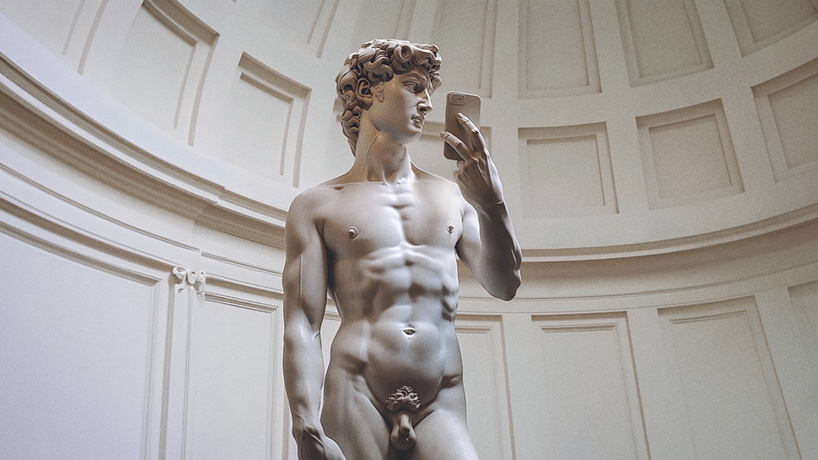
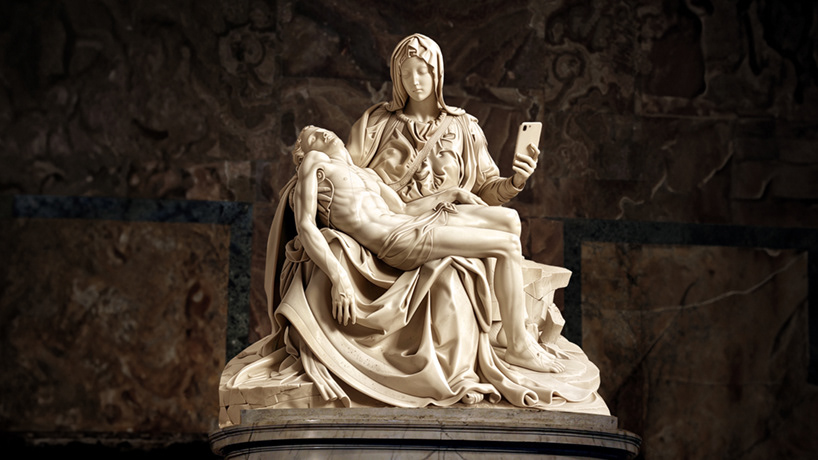
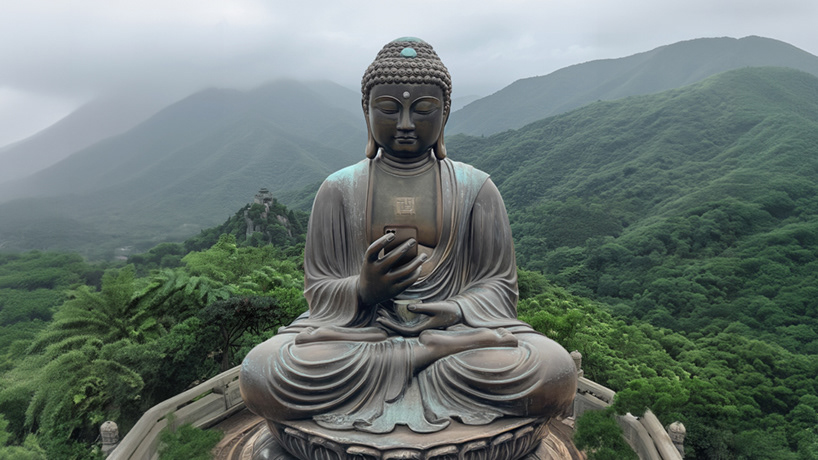
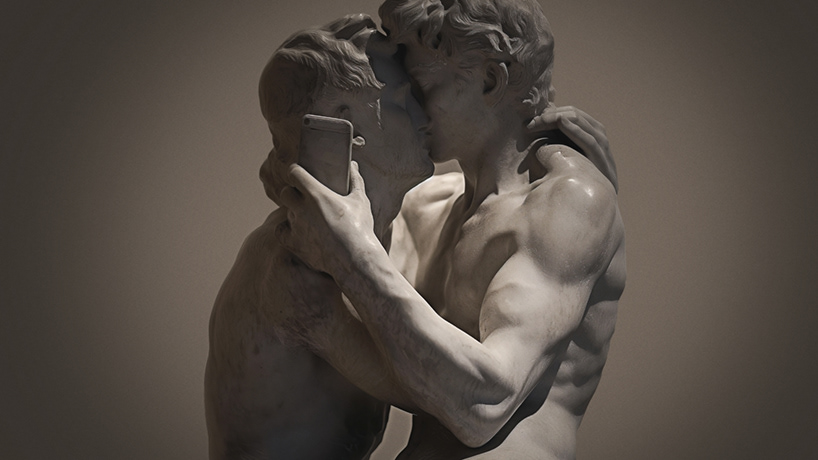
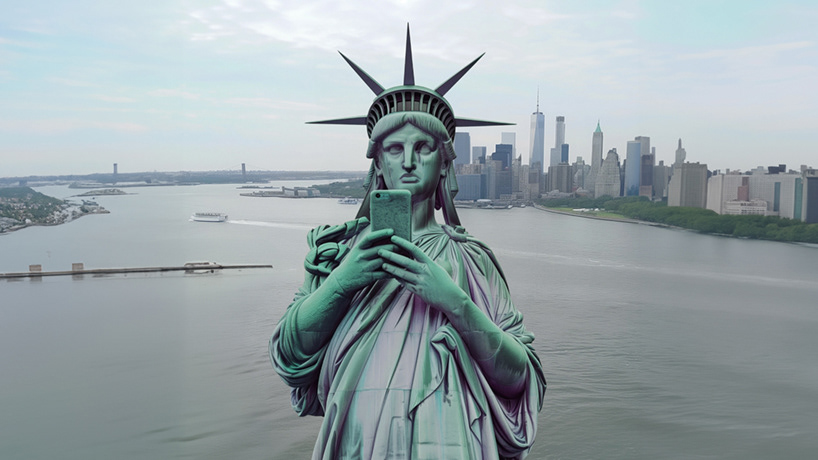
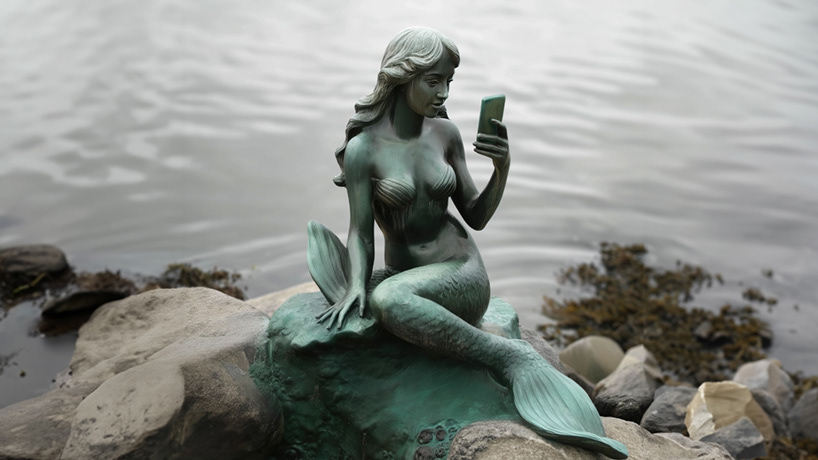
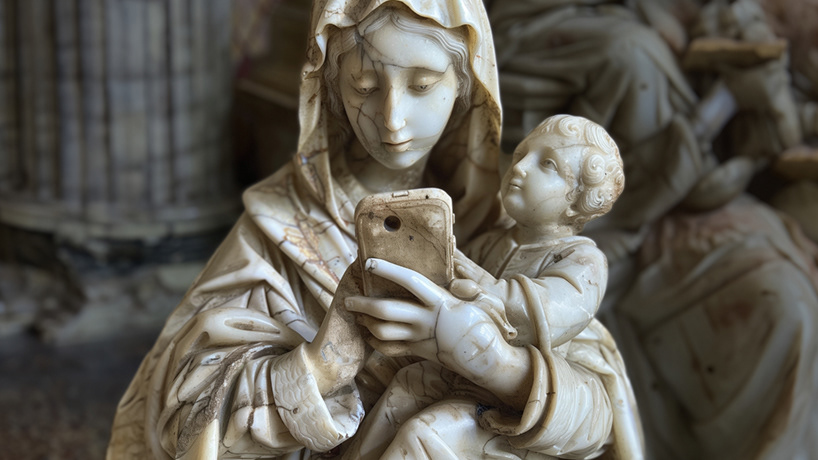
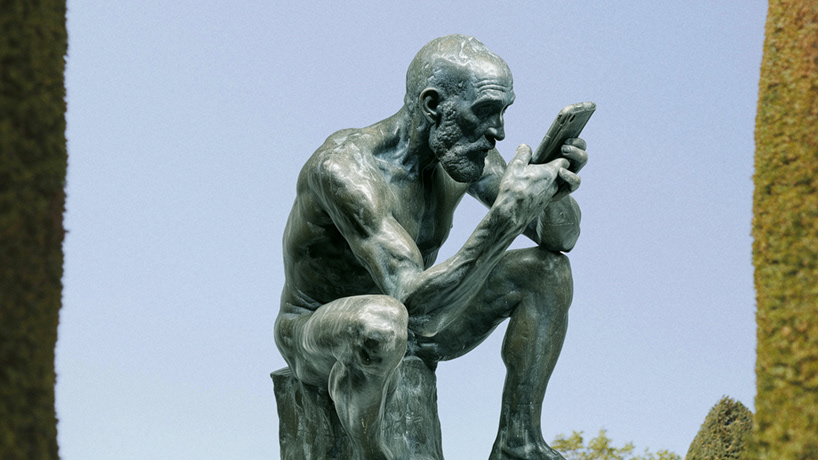
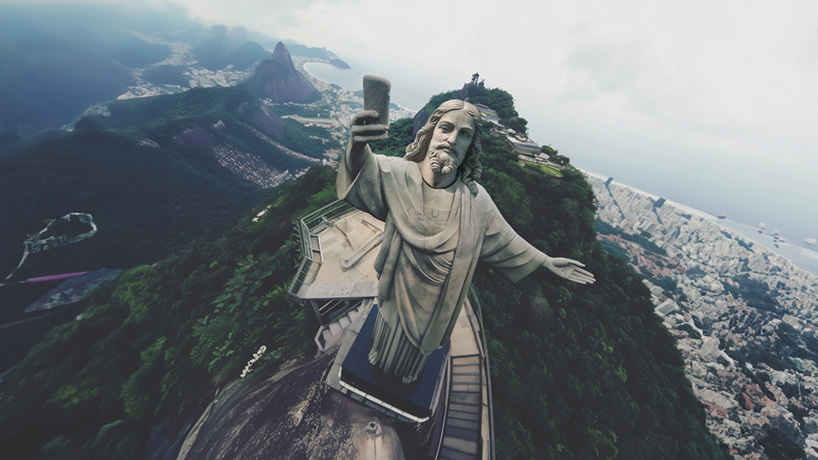
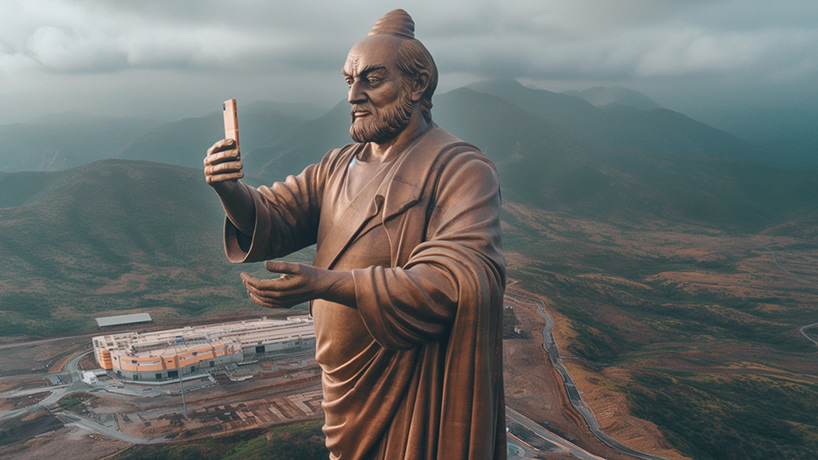
What if the design characteristics of musical instruments influenced the architecture of future homes?
The fusing of art, music, and architecture creates a visually immersive living experience that resonates with both the inhabitants and the surrounding environment. In this series, the characteristics of different musical instruments influence the design aesthetic of future homes.
A home inspired by an acoustic guitar could have a timber-centric design, incorporating wooden elements that mimic the instrument’s body. The roof could be shaped like the curvaceous body of a guitar, with wooden beams creating intricate patterns. The interior could showcase exposed wooden beams, textured walls, and a warm colour palette to evoke the cozy feeling of a James Taylor tune.
Drawing from the dynamic design of a drumkit, a home for Ringo Starr could feature bold and contrasting geometric shapes. The exterior might incorporate circular and cylindrical elements, reminiscent of drum shells and cymbals. The interior spaces could be open and spacious, with various levels and platforms that mirror the different levels of mounted toms. Colours and materials could be chosen to evoke the energy and vibrancy associated with drums. Huge circular rooms with disc shape lights reminiscent of drum skins create elegant spaces.
Imagine a home with curved and sleek lines, reminiscent of the curves of a saxophone. The exterior could feature brass elements, resembling the instrument’s metallic body. These elements could catch and reflect sunlight, and play with light and shadow. The interior could feature rounded corners, cozy alcoves mirroring the smooth melodies of John Coltrane. With no right angles, the acoustics for listening to music would be the perfect vibe.
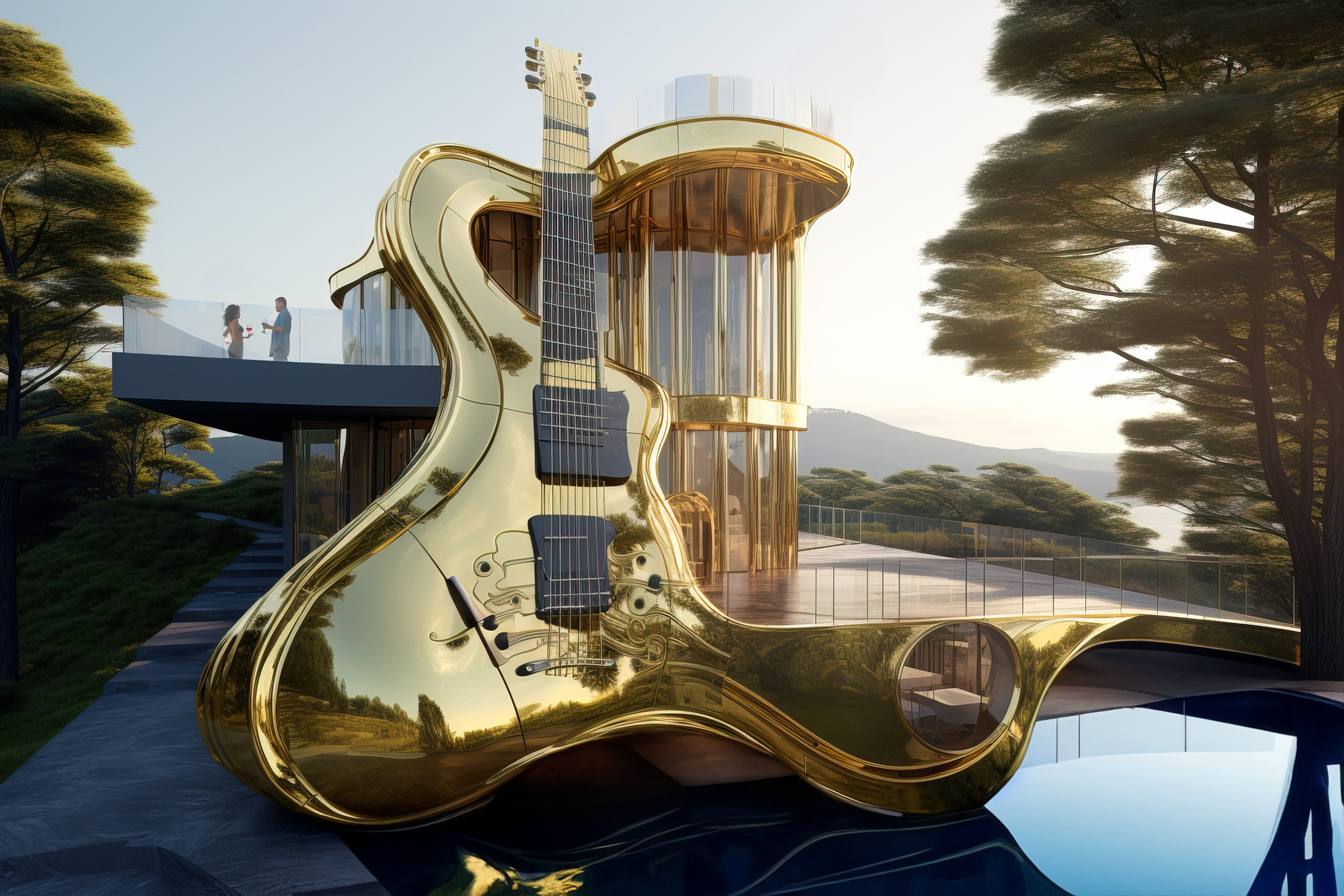
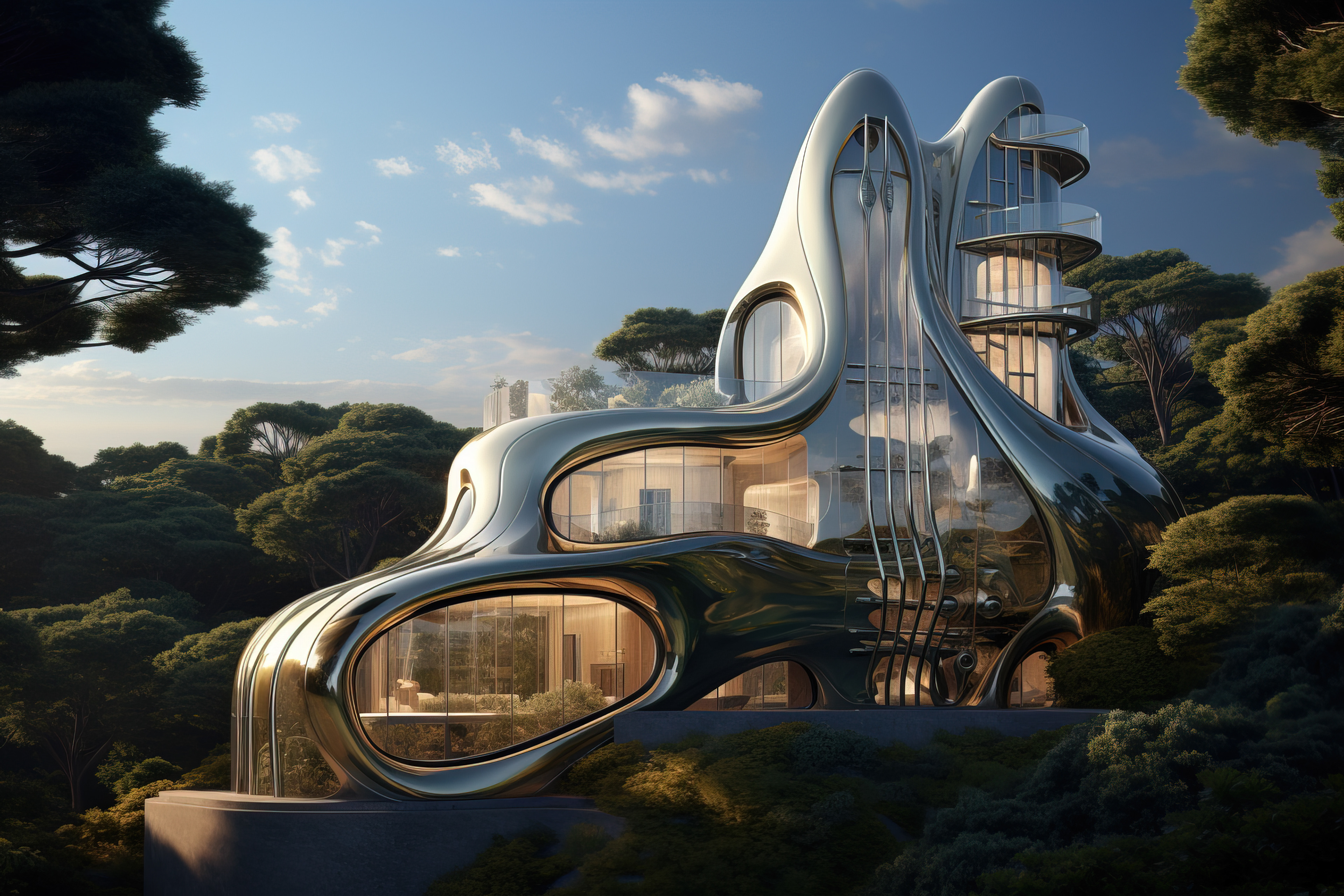
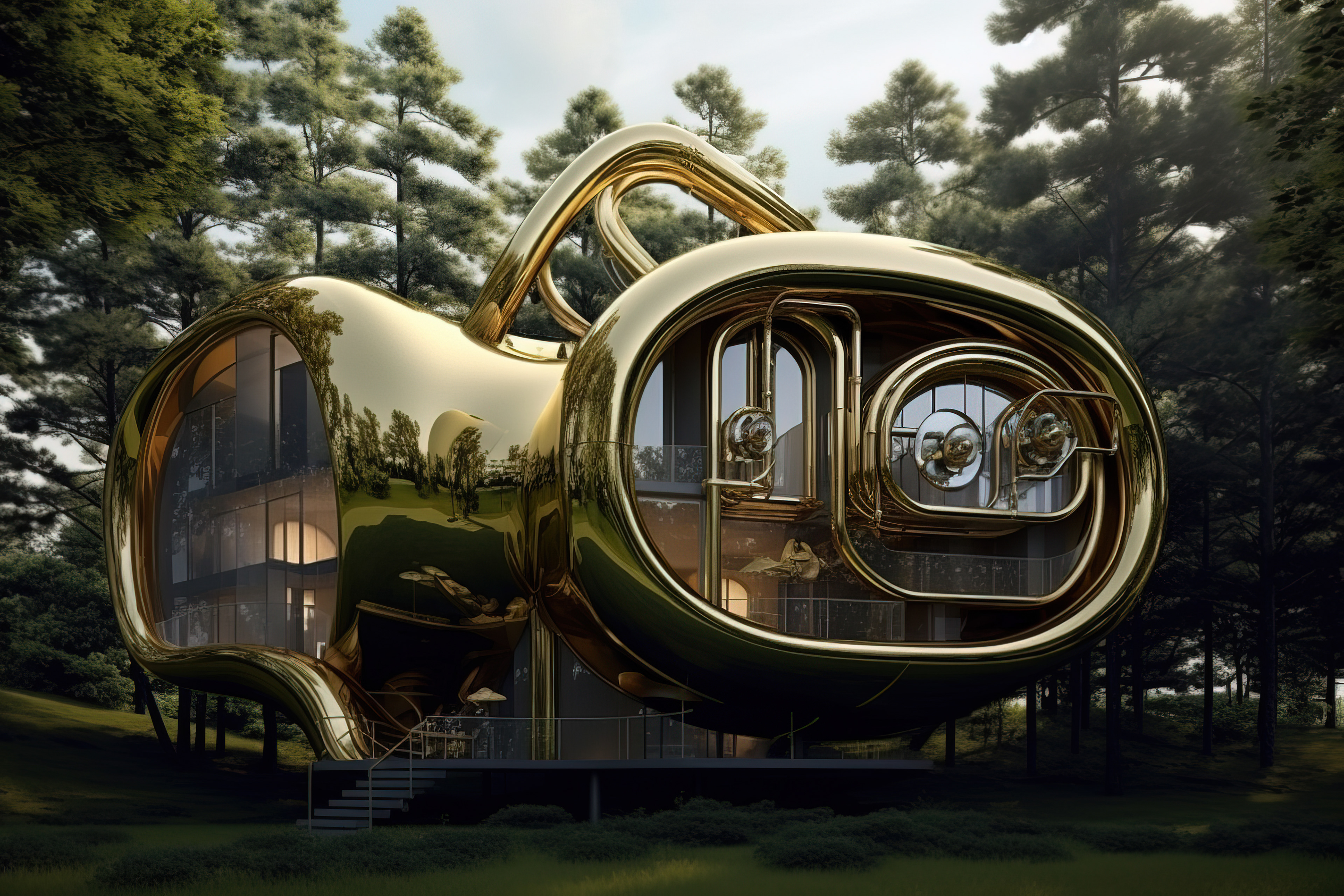
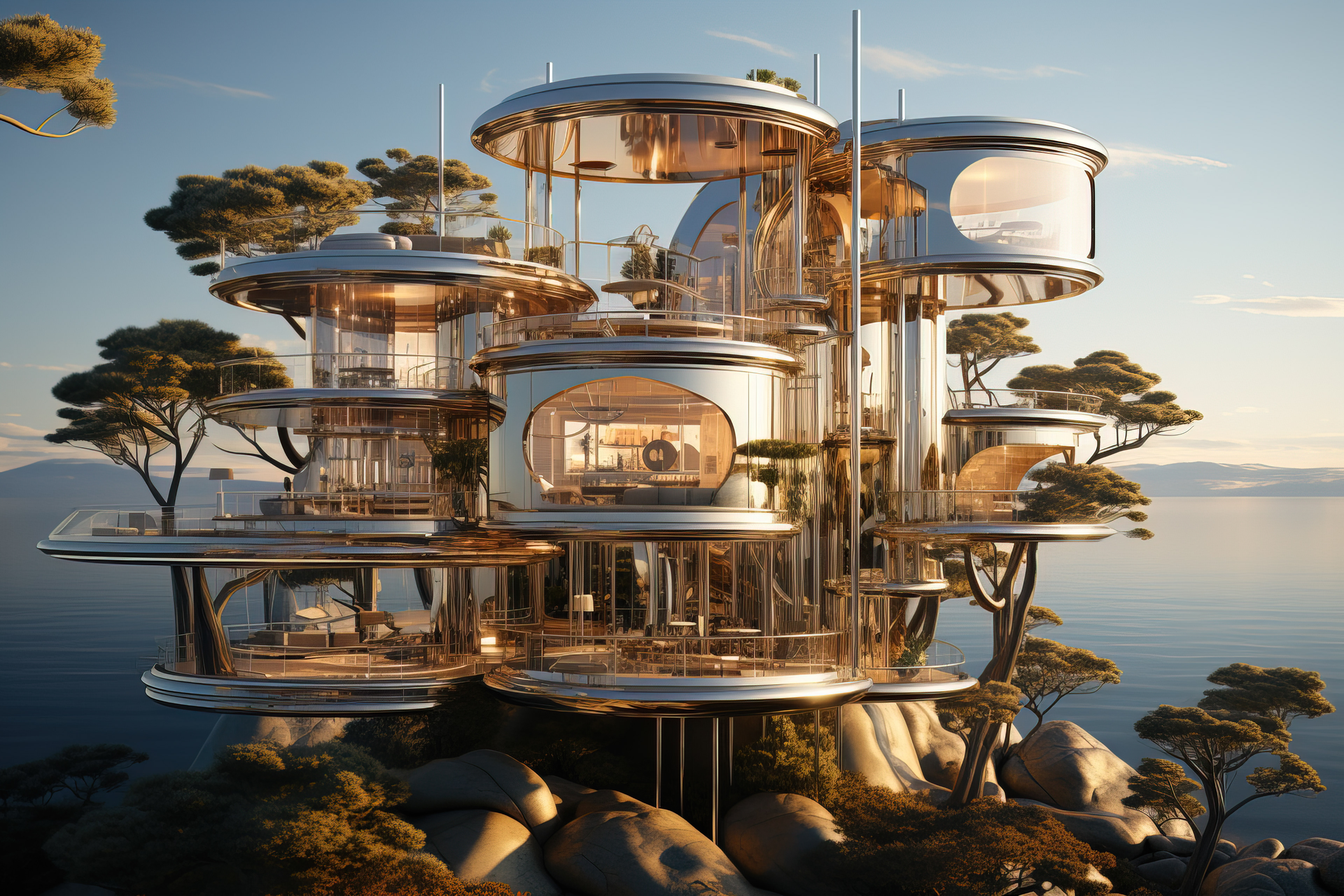
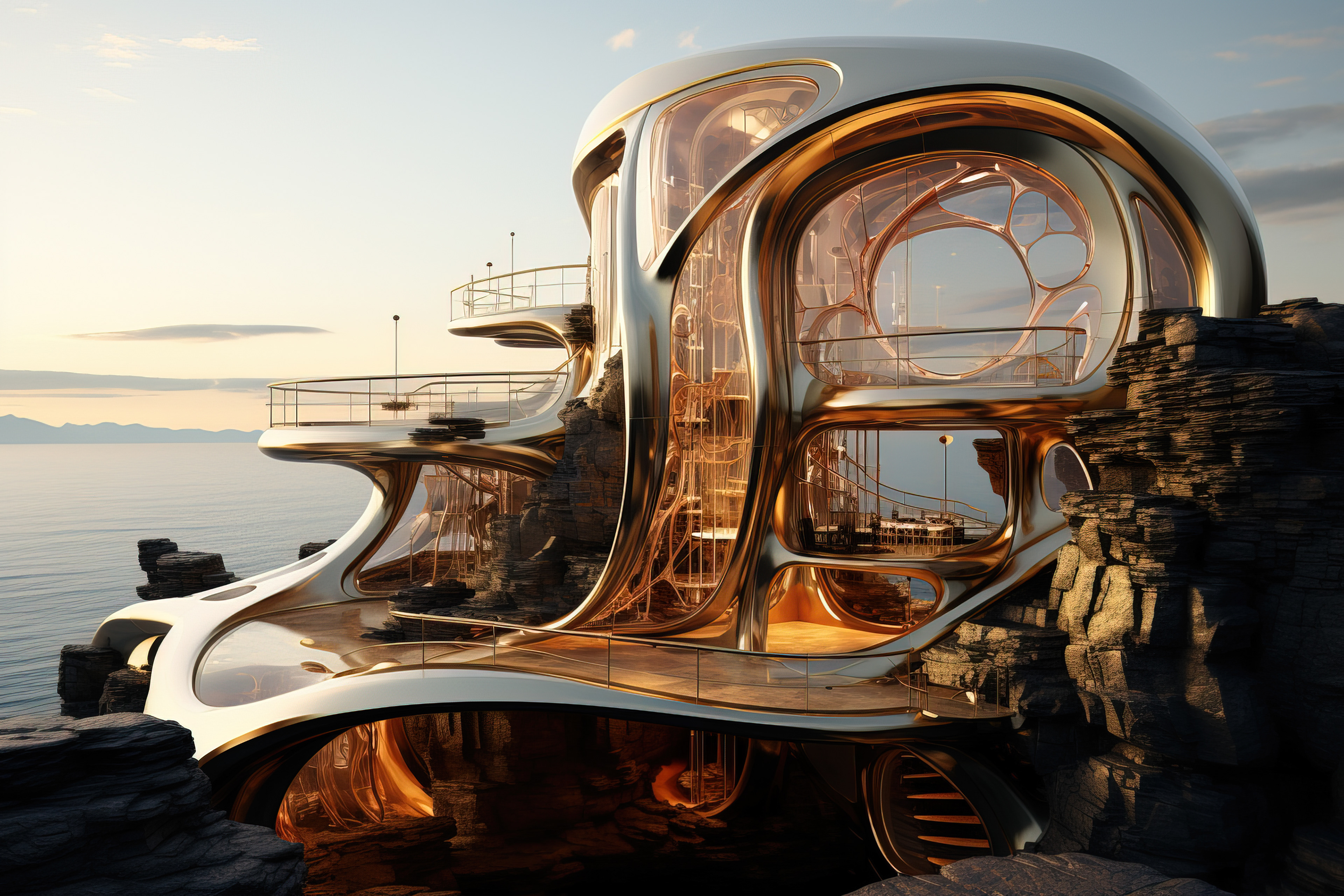
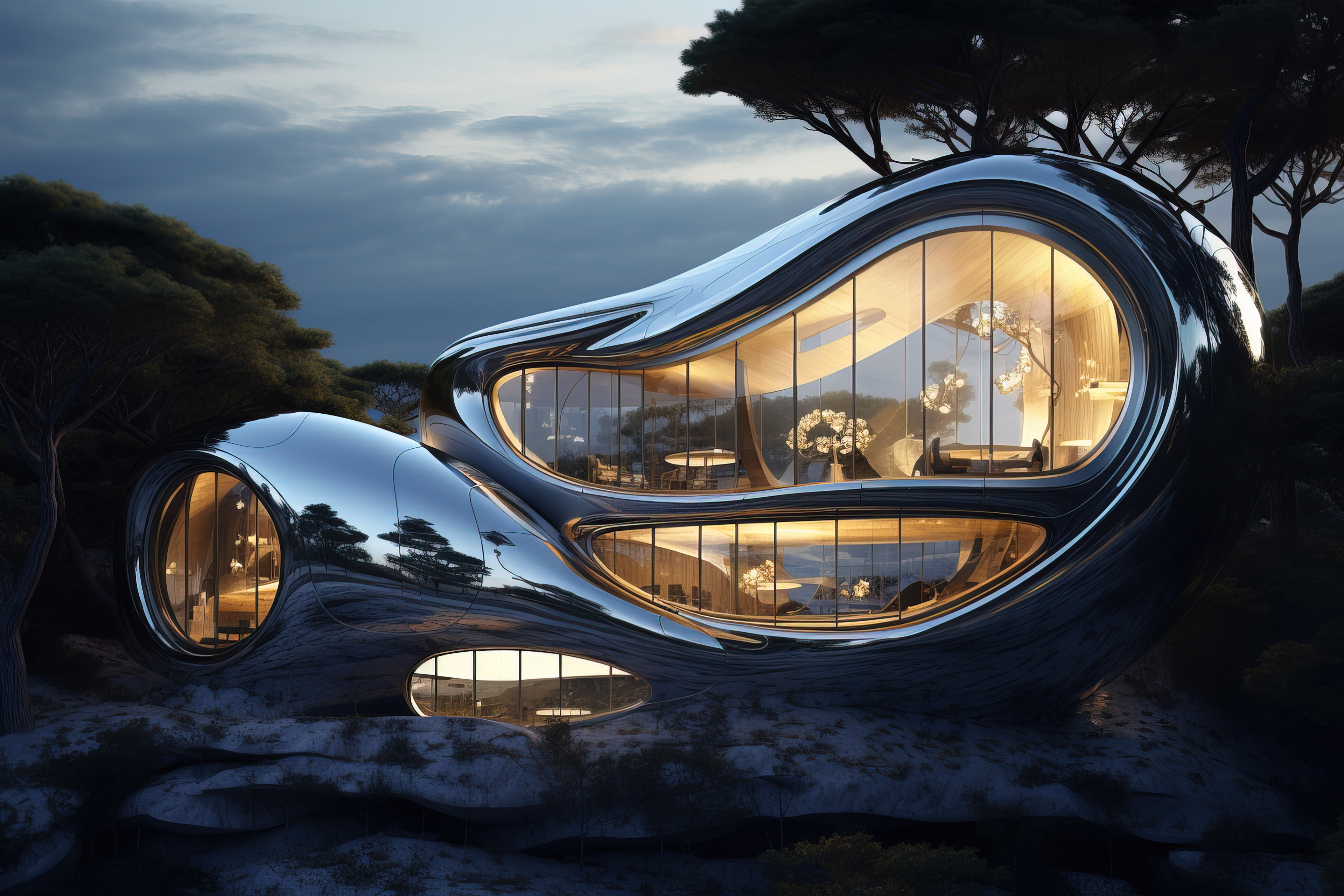
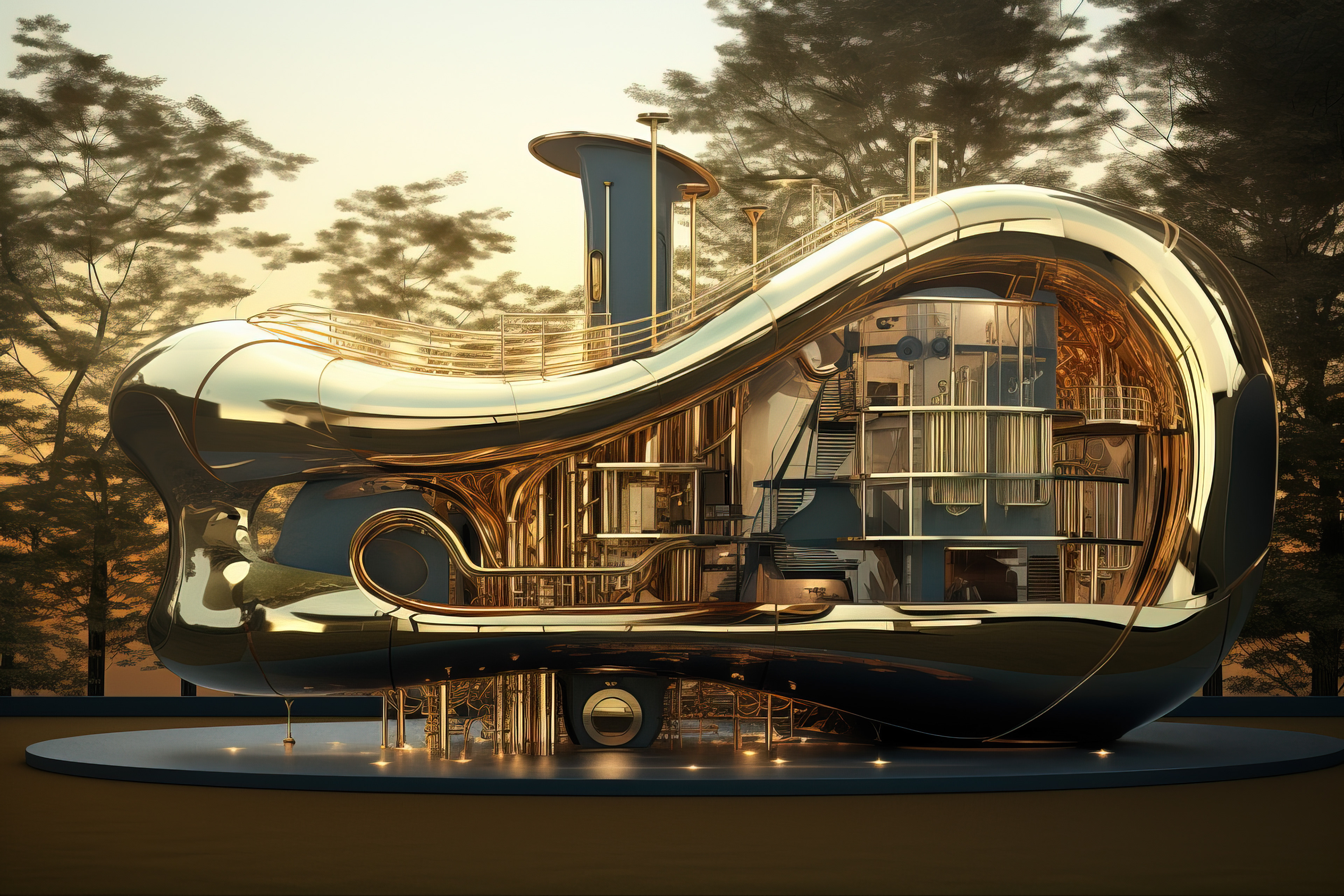
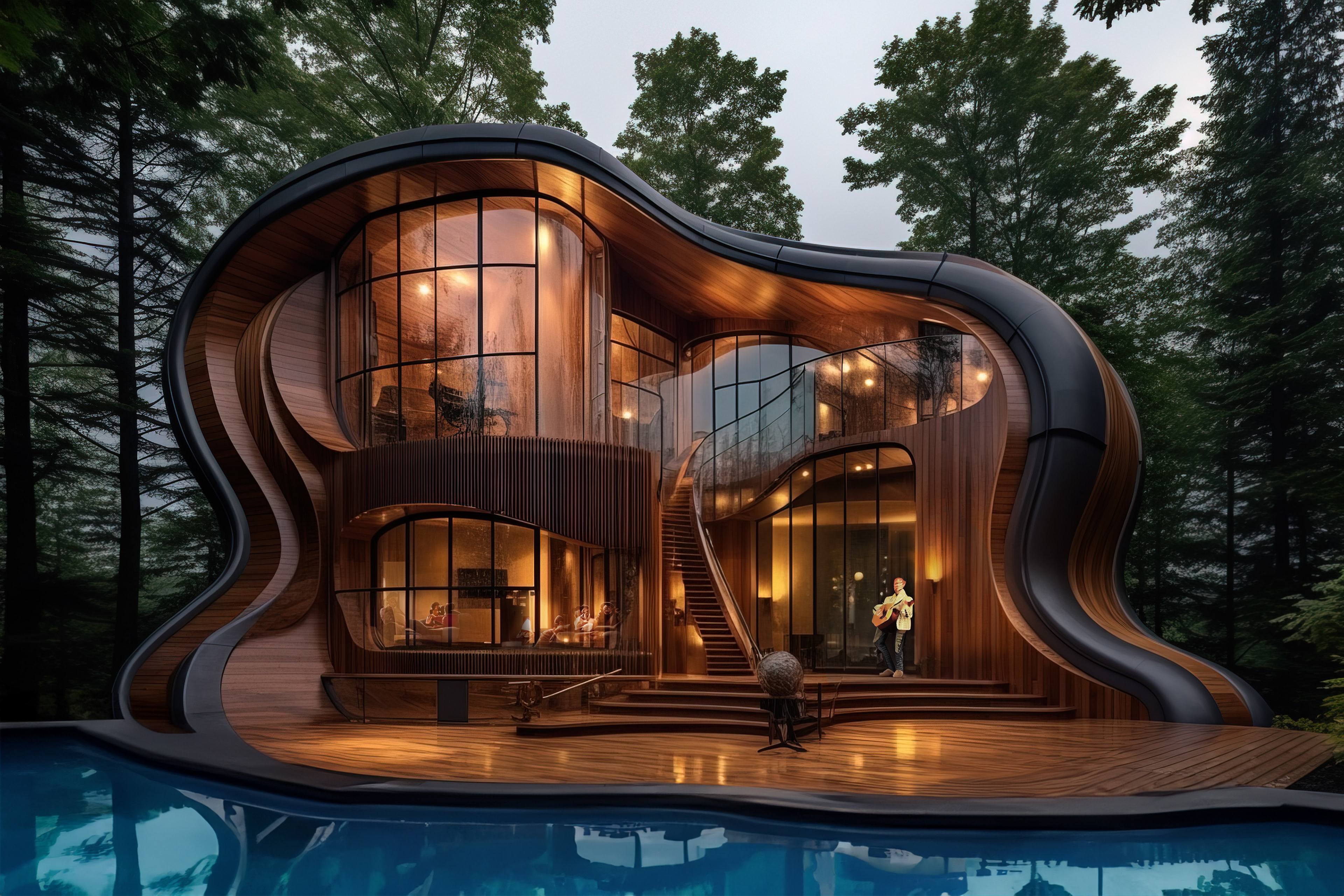
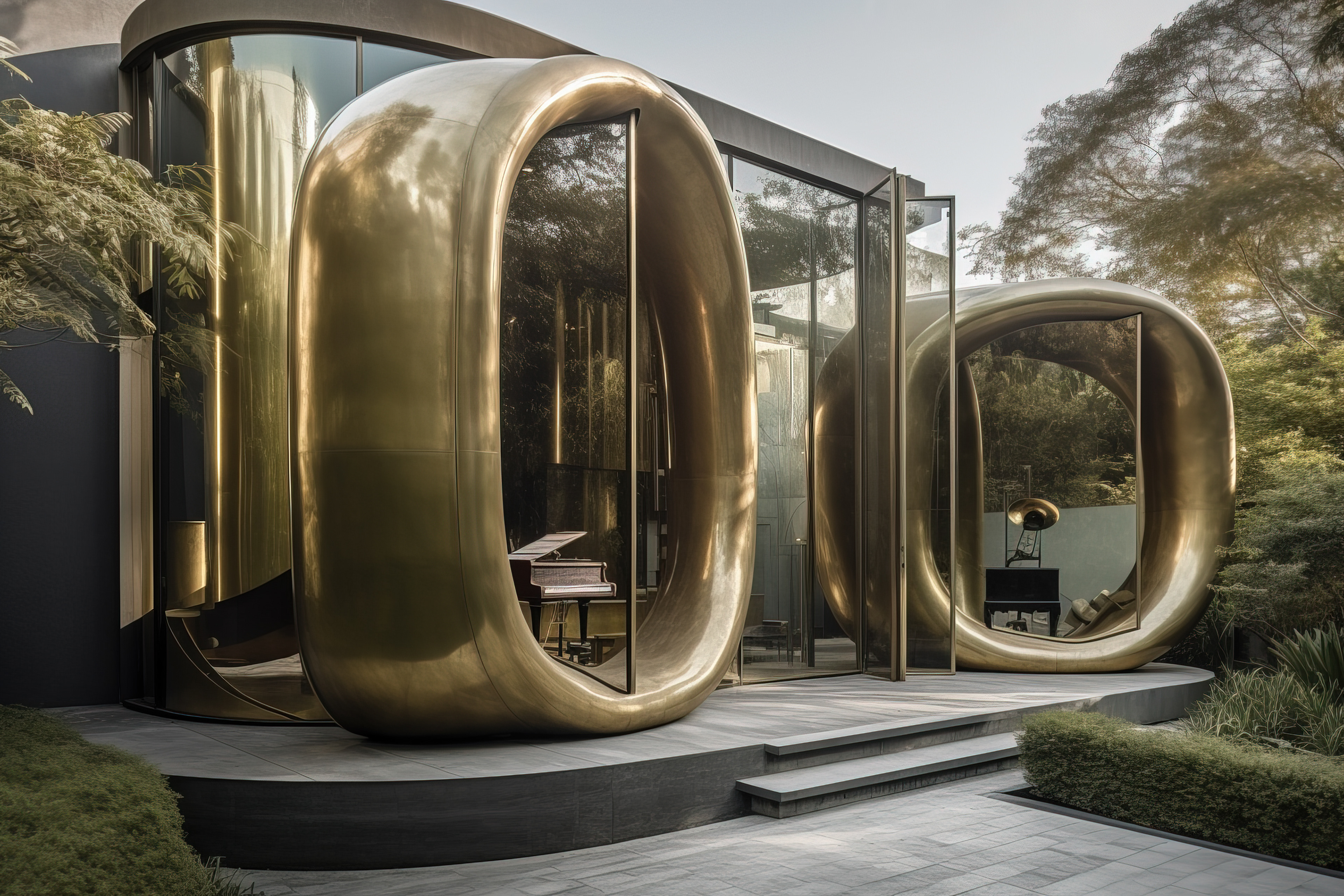
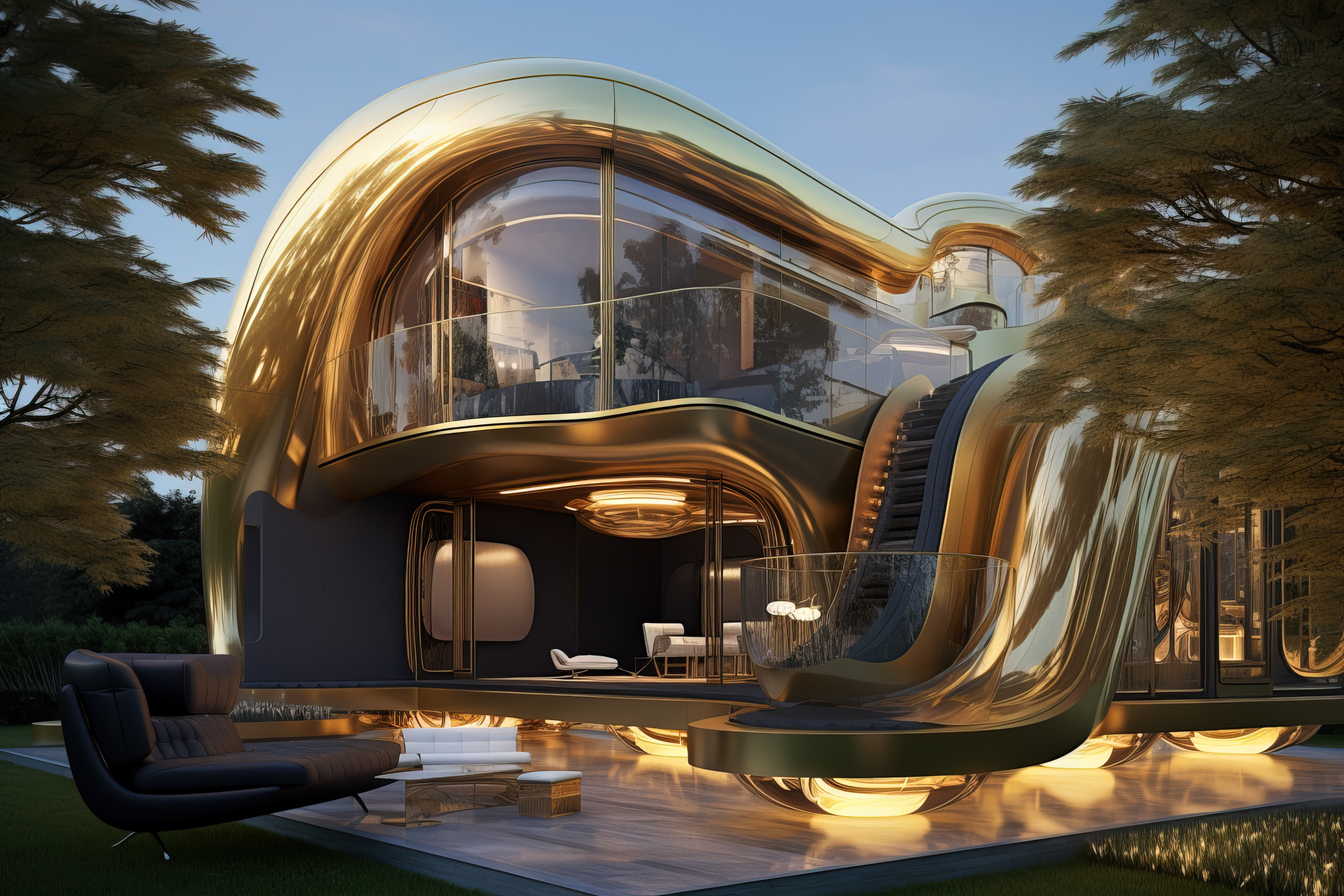
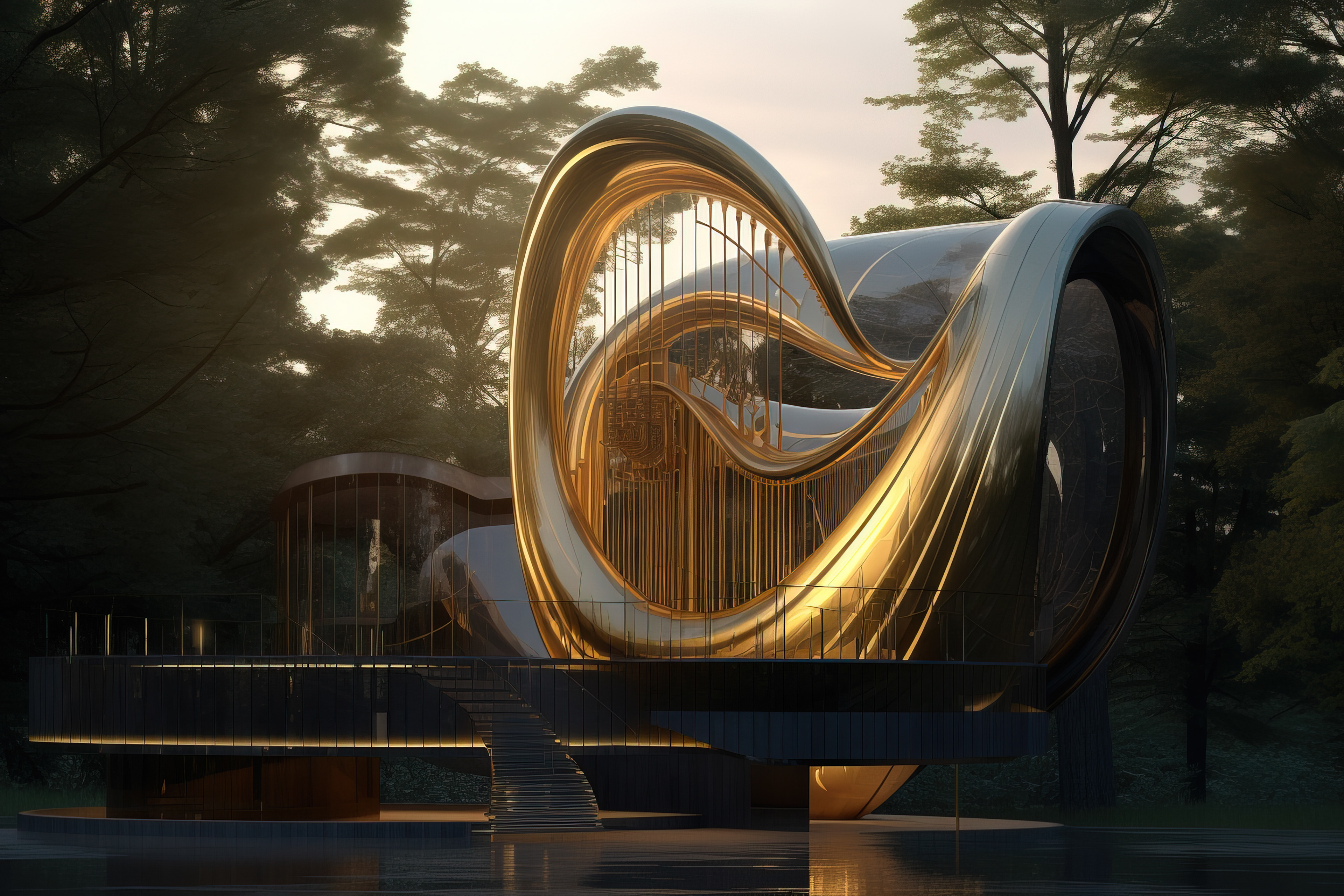
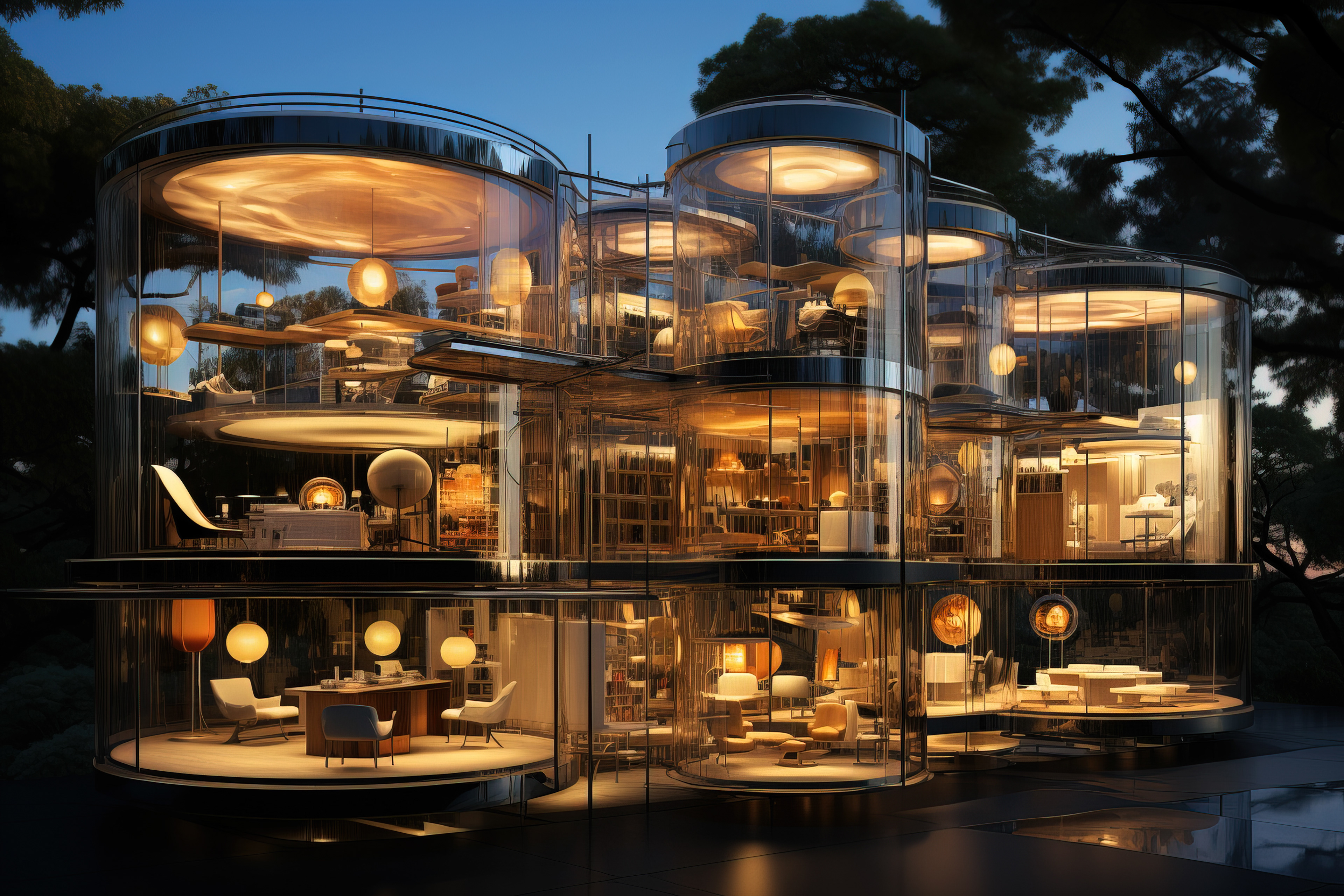
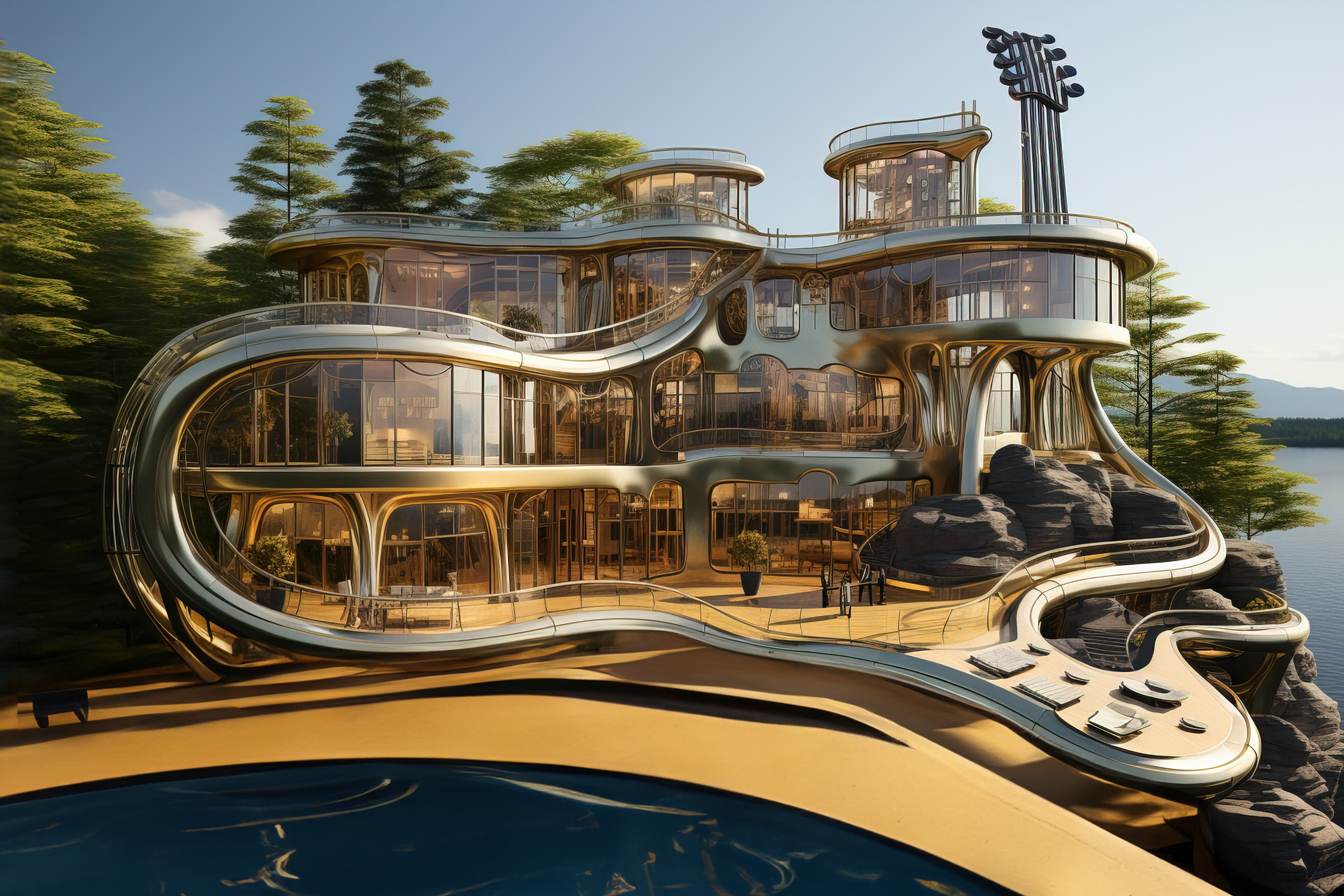
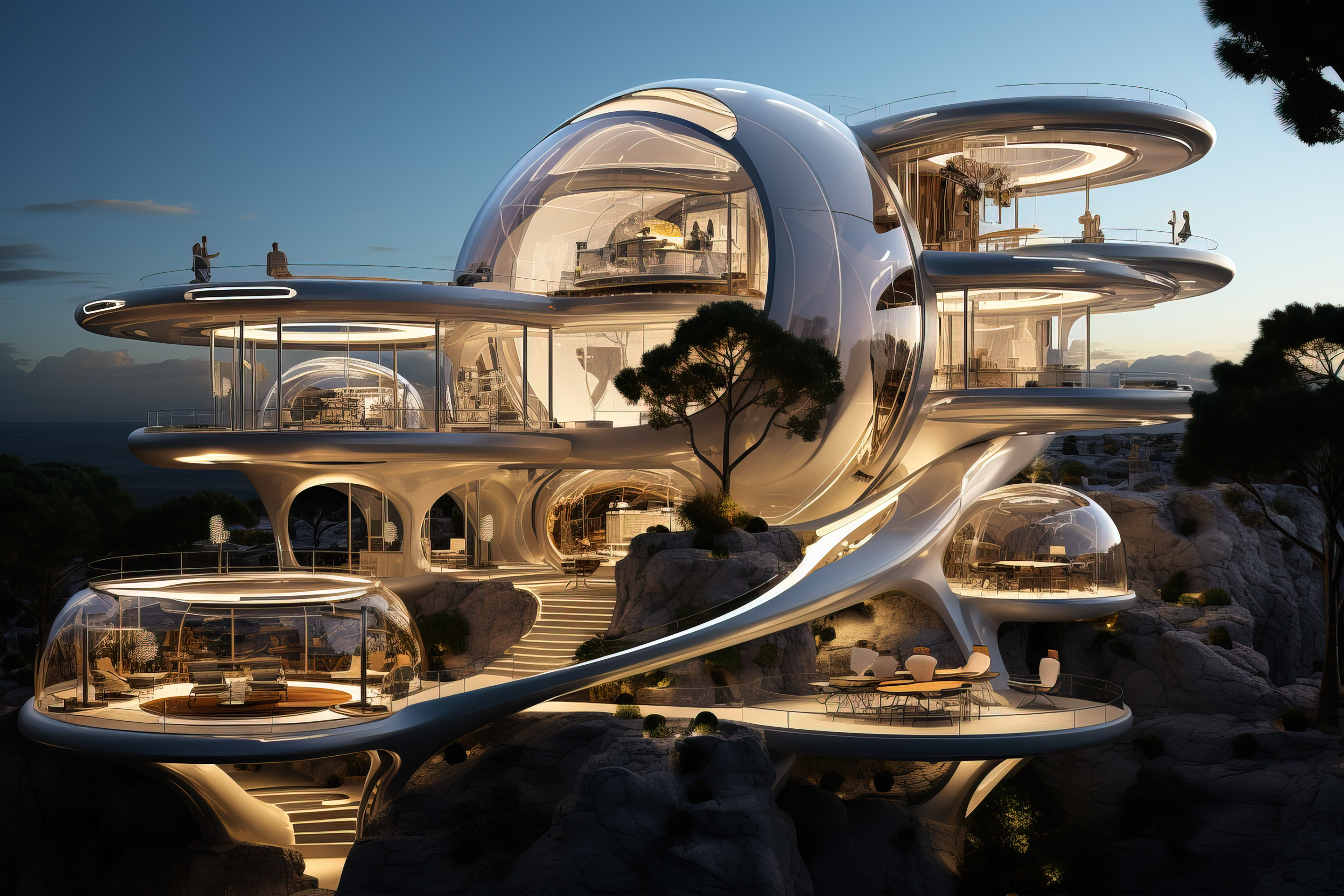
What if tiny spy creatures existed using advanced robotics and artificial intelligence.
Using the power of AI we can imagine various creatures as espionage facilitating robots. The digital art series are illustrated through the process of Prompt crafting in Midjourney and Photoshop for additional editing.
The history of drones took an especially weird turn in the 1970s when the CIA began fiddling around with a prototype for an eavesdropping robot called the Insectothopter.
The insectothopter was one of their most secret projects during the Cold War. It was so secret that it wasn't even revealed until many years later. It was designed to look like a dragonfly and be used for surveillance purposes. The idea was to create a small device that could fly into enemy territory undetected and gather information without being noticed. The insectothopter was controlled remotely and was able to fly for short distances, but it was difficult to control and didn't always work as planned. Despite these challenges, the insectothopter was a fascinating invention that inspired many other researchers to work on developing small flying robots for a variety of purposes.
Over the years, many other insects and animals have been developed for spying purposes. One example is the "robofish," a remote-controlled robotic fish developed by the US Navy for underwater surveillance. The robofish looks and moves like a real fish, and it is able to collect information on underwater environments without being detected.
The spy creatures series explores the idea of advanced robotics using artificial intelligence. With AI, we can rapidly imagine autonomous solar powered bot creatures with GPS enabled navigation systems and cameras for eyes that can go undetected and possibly armed in “Black Mirror” style for extreme espionage circumstances. Take a closer look in your garden, maybe they already exist.
The spy creatures series explores the idea of advanced robotics using artificial intelligence. With AI, we can rapidly imagine autonomous solar powered bot creatures with GPS enabled navigation systems and cameras for eyes that can go undetected and possibly armed in “Black Mirror” style for extreme espionage circumstances. Take a closer look in your garden, maybe they already exist.
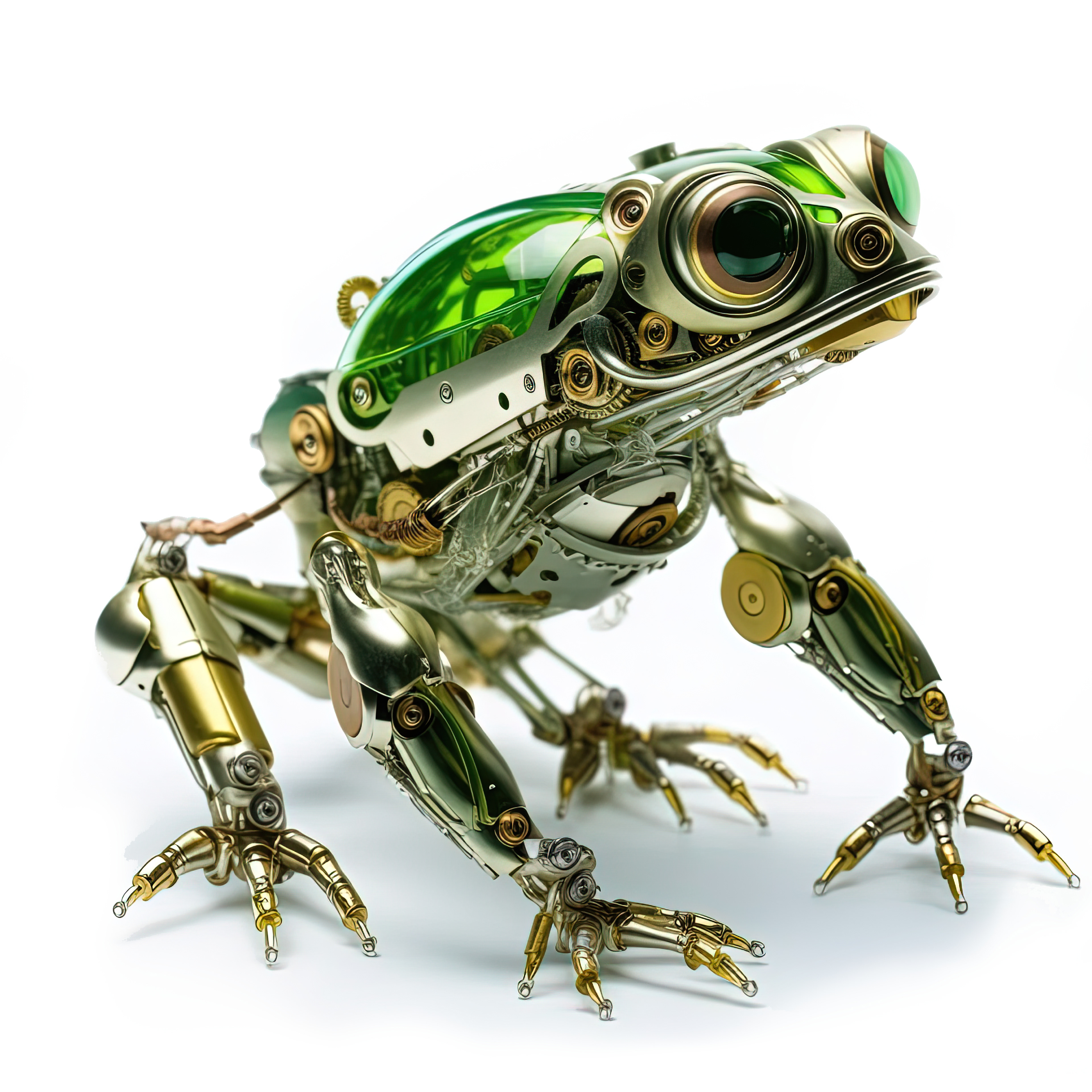
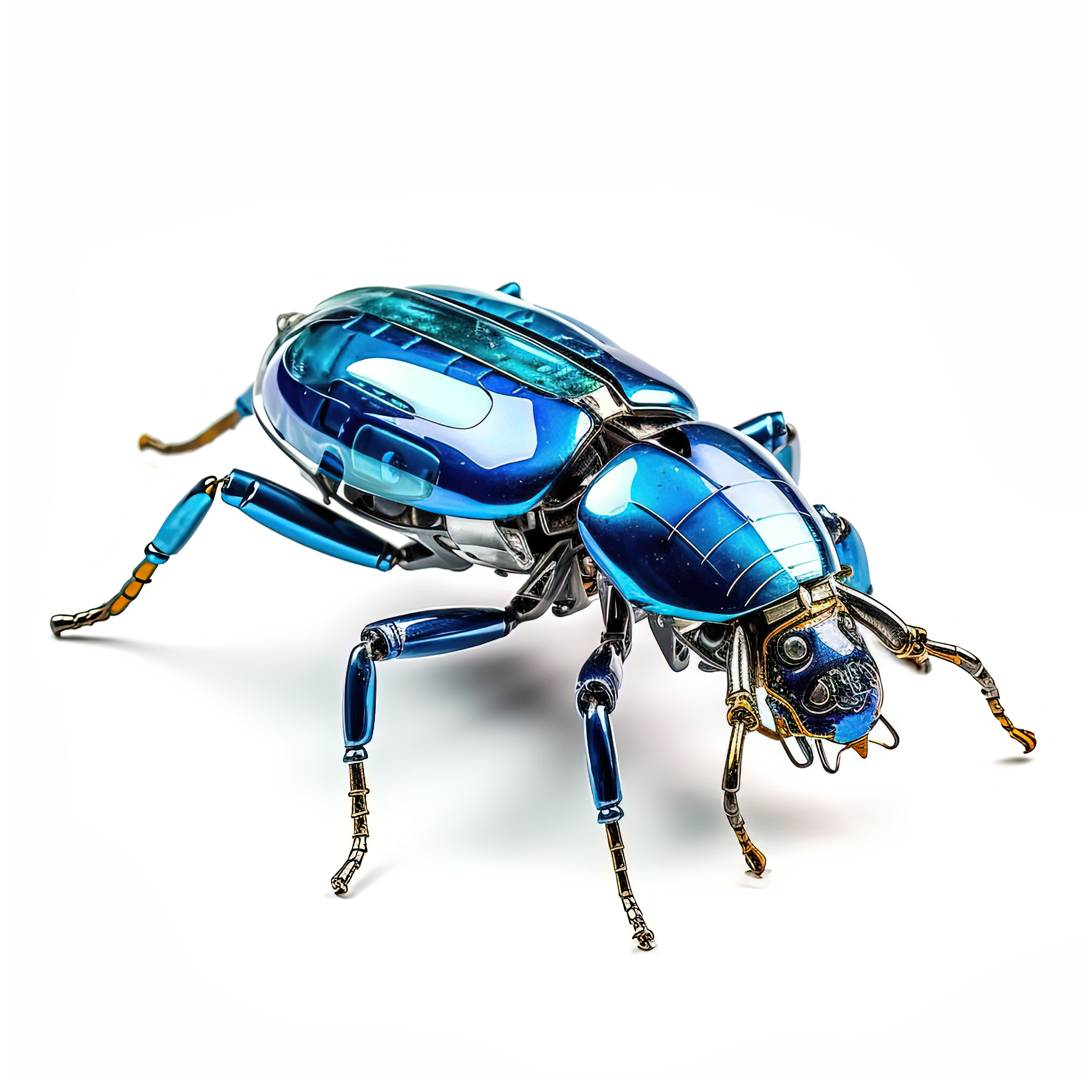
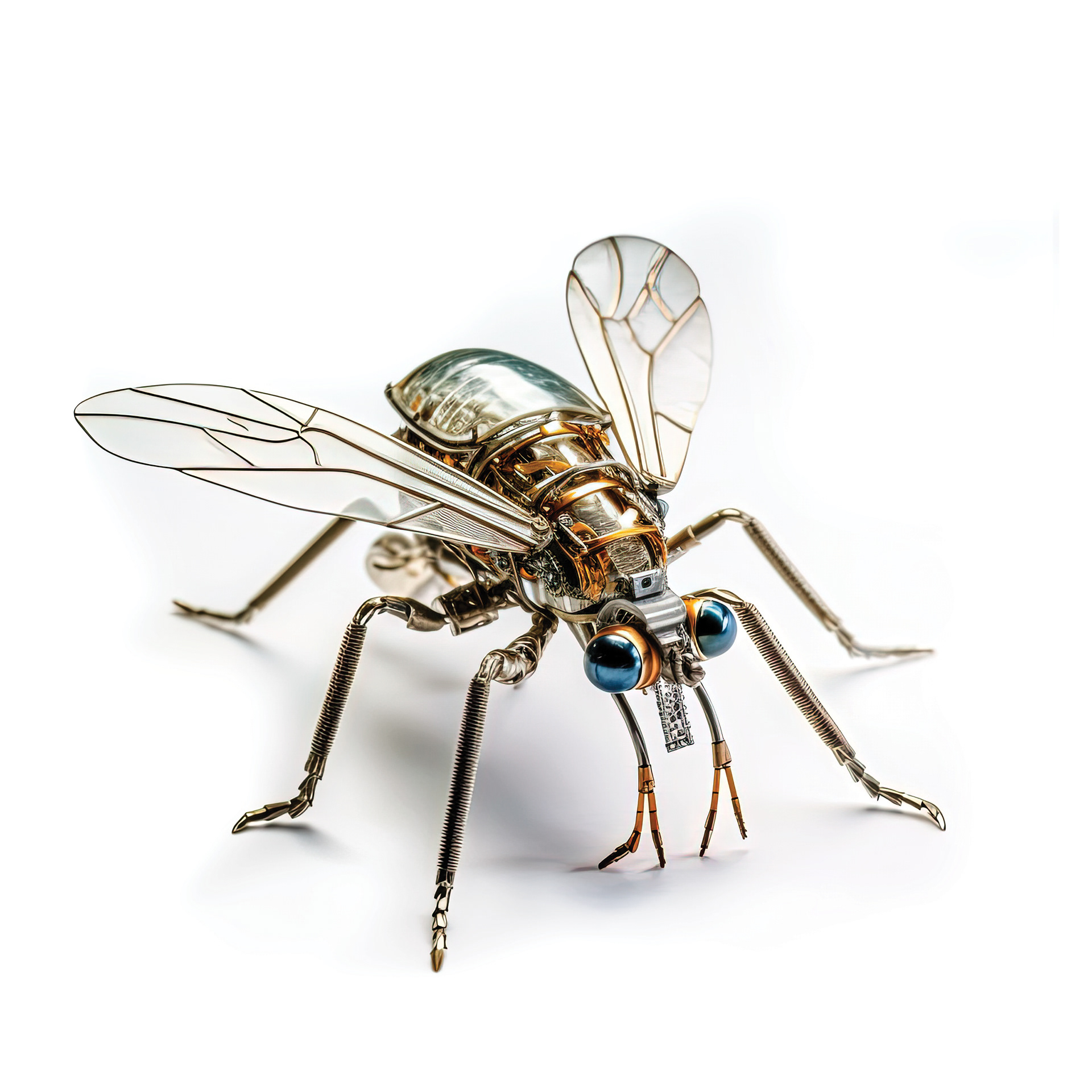
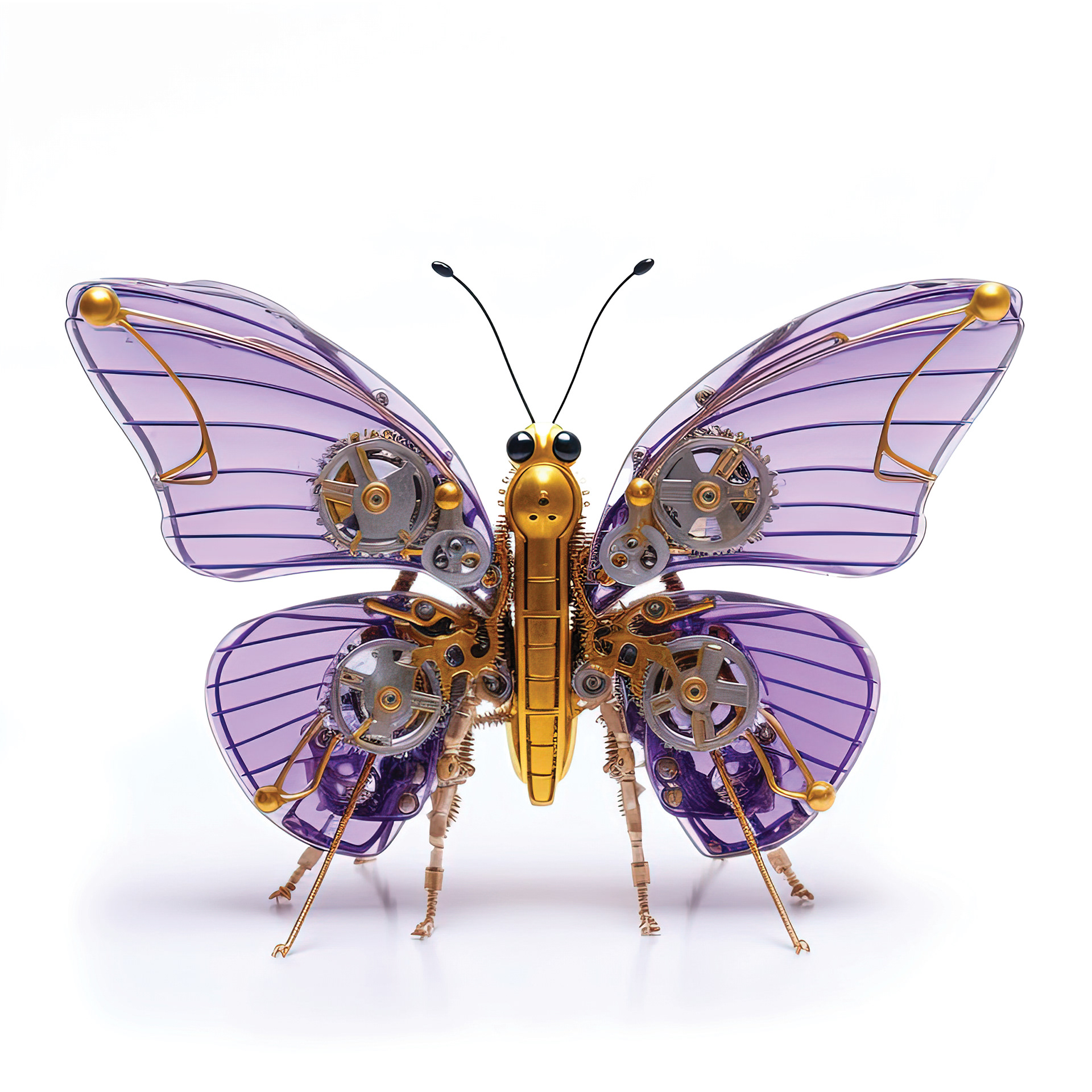
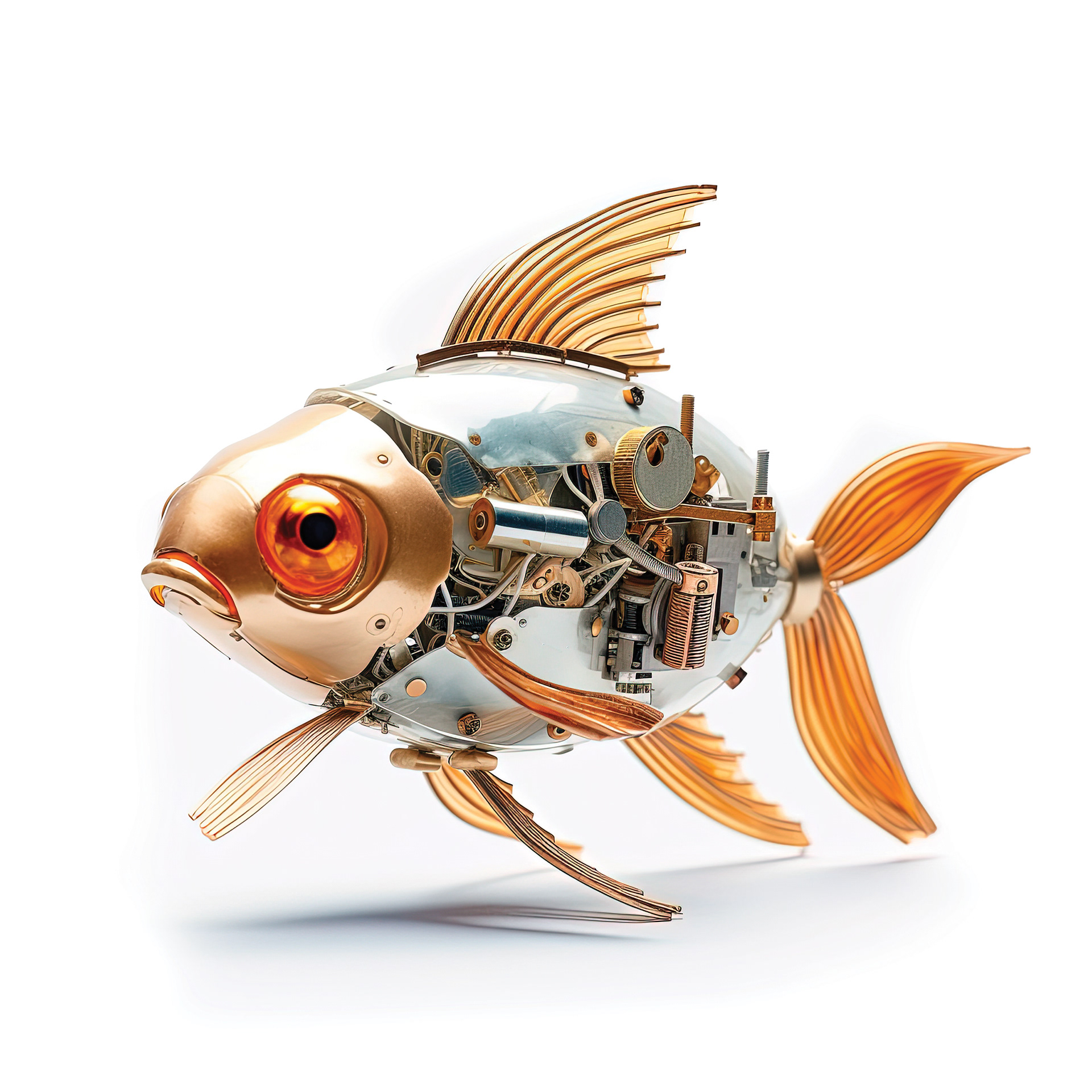
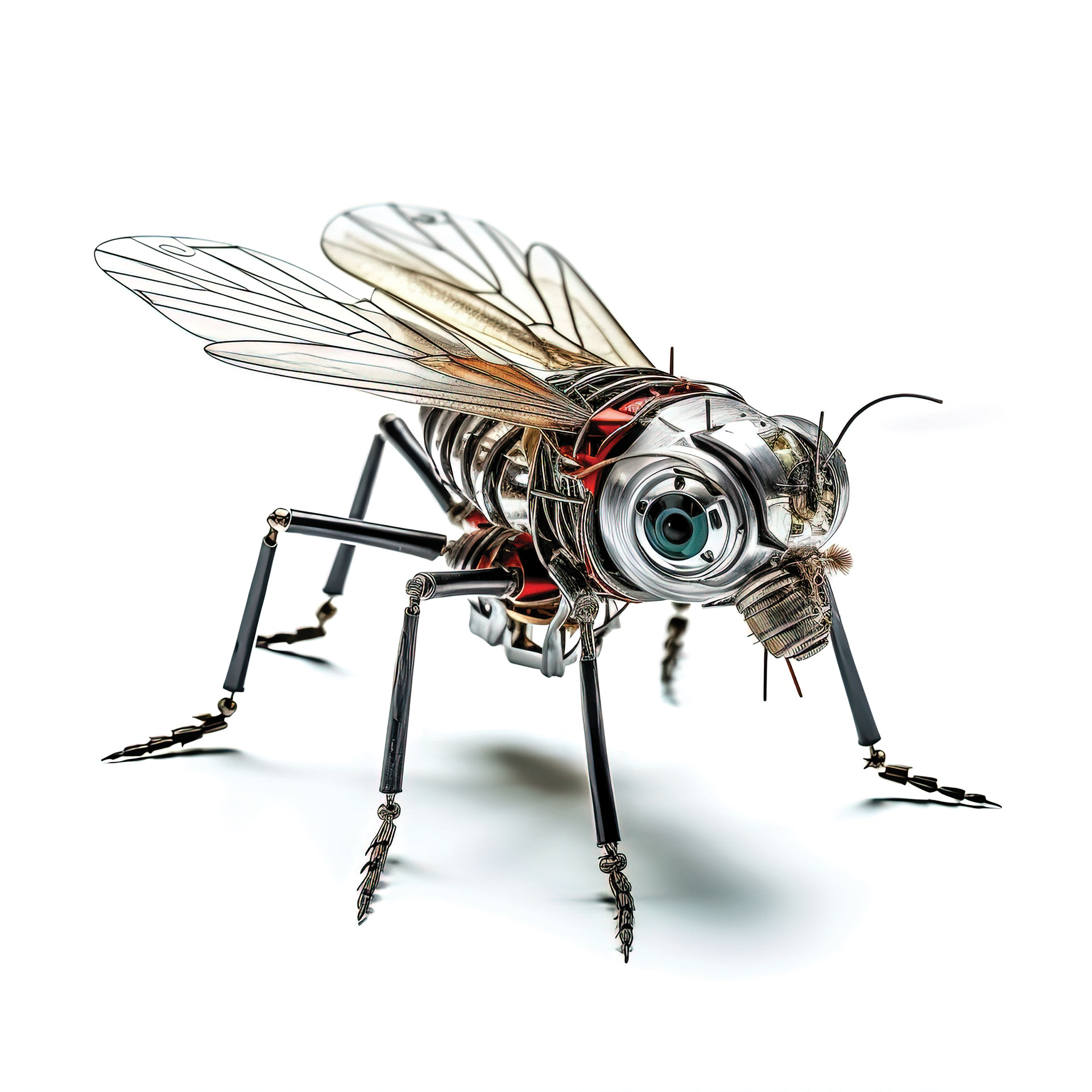
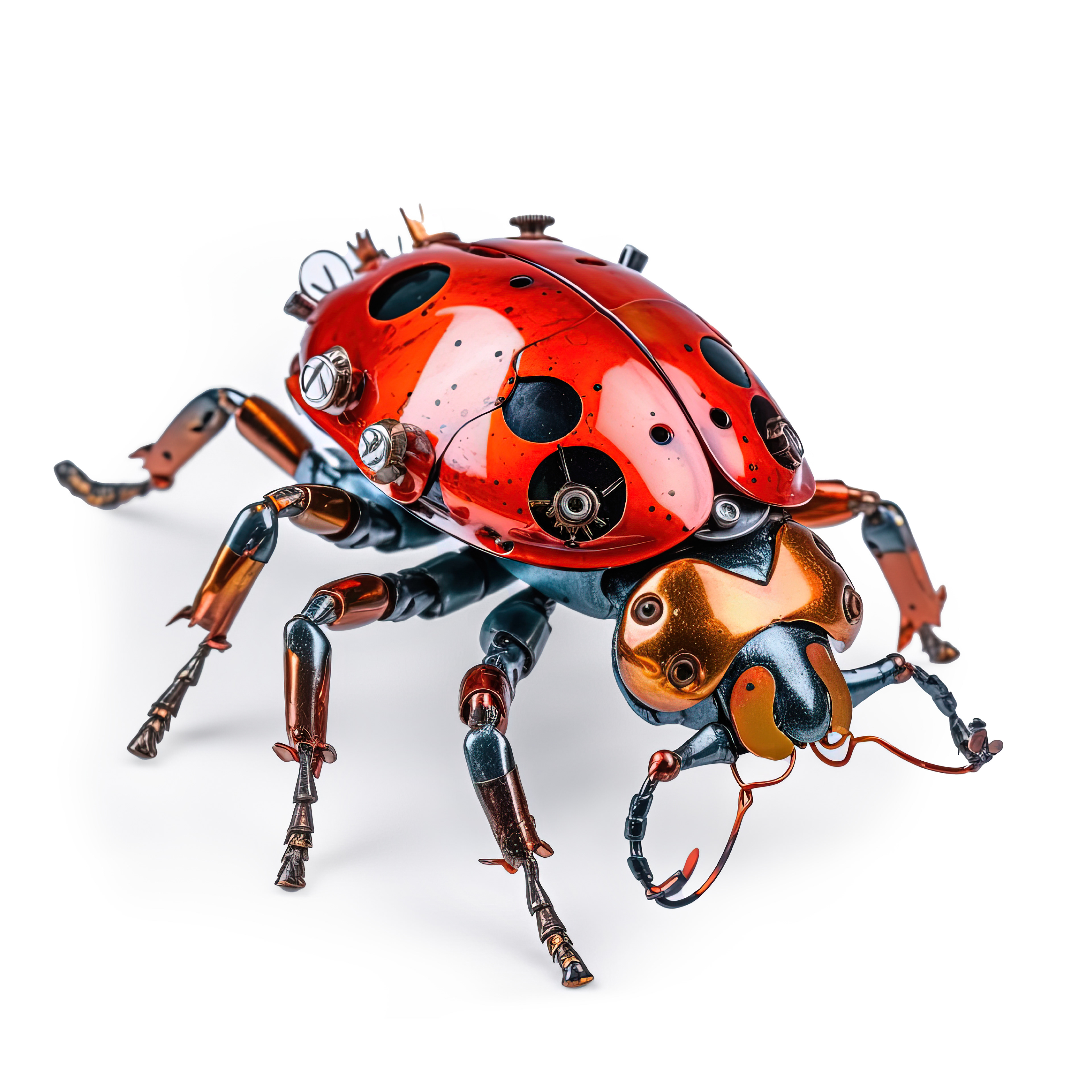
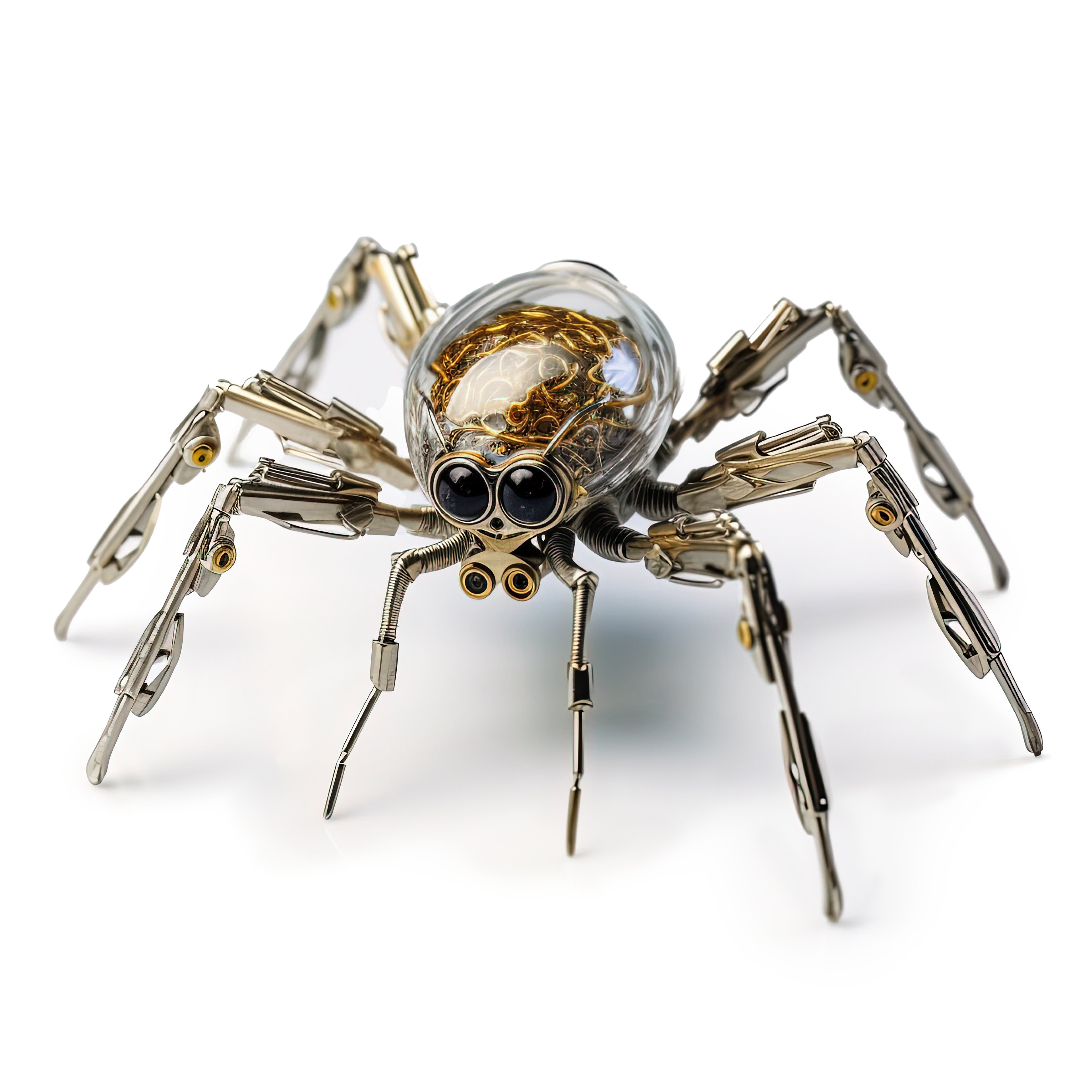
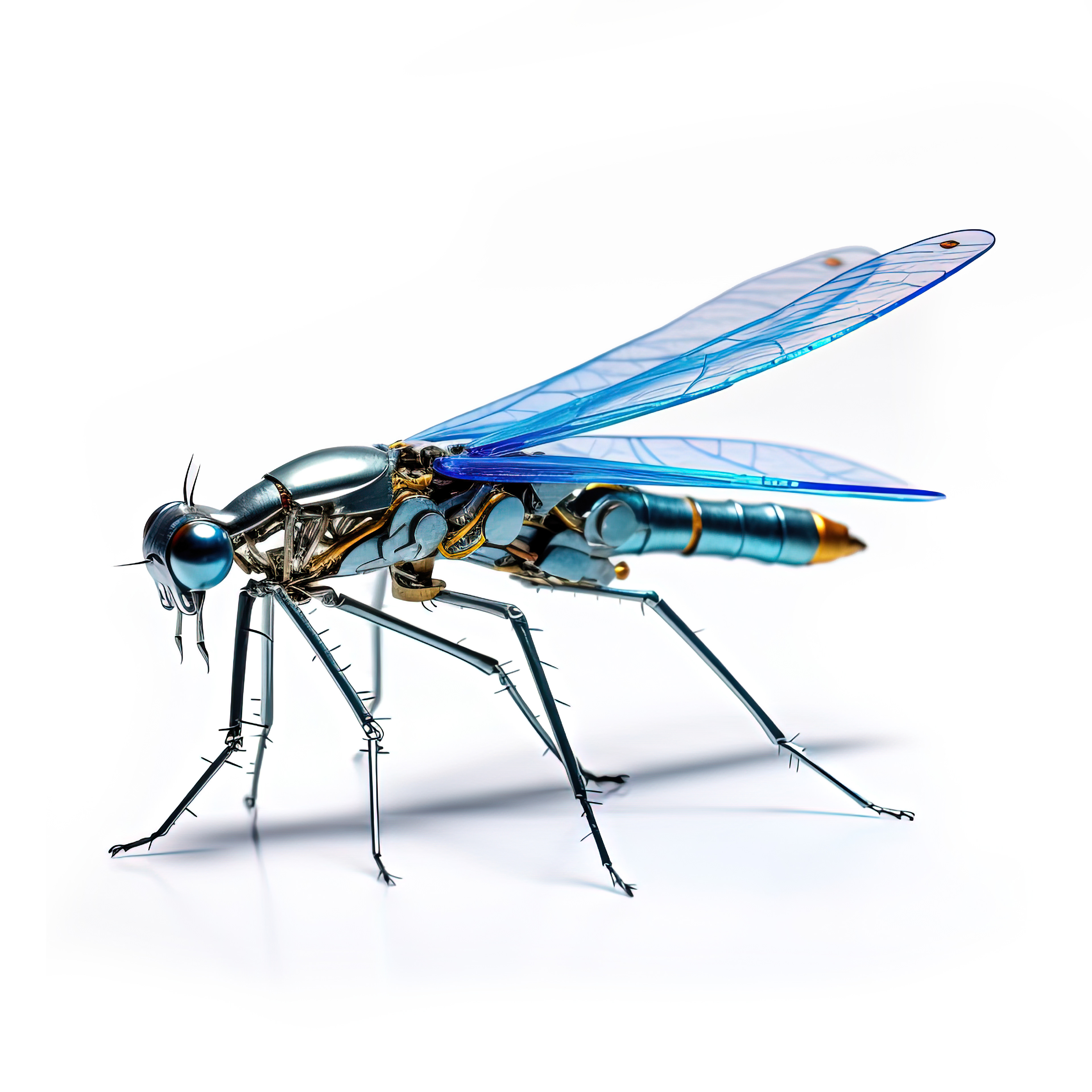
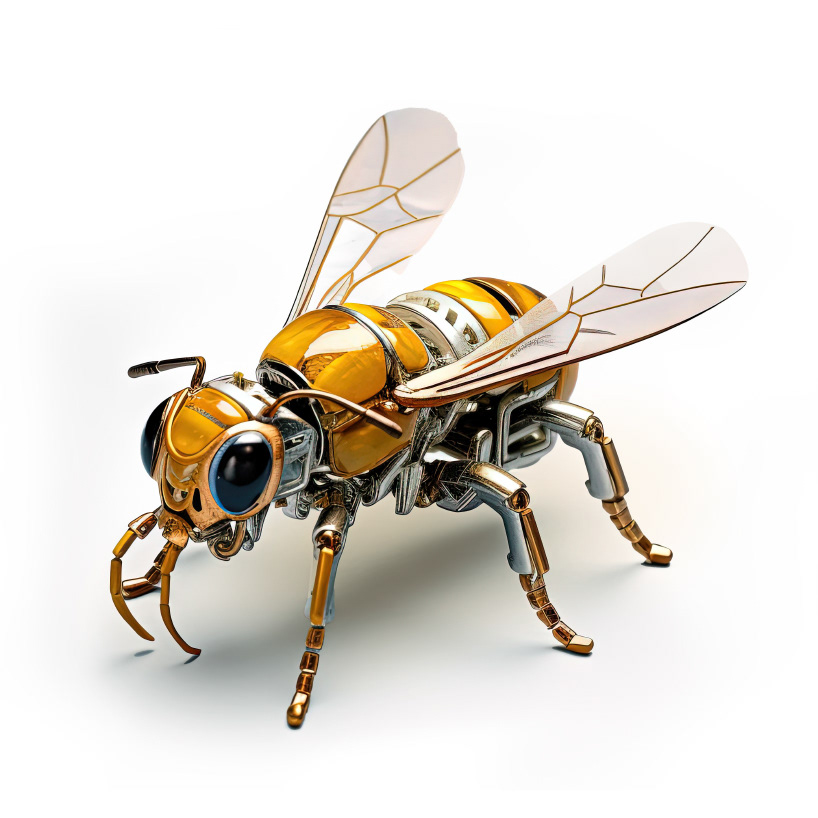
What if Antoni Gaudí inspired the design of household appliances?
Gaudí has been considered one of the greatest architects of the twentieth century. He was influenced by neo-gothic styles, art nouveau, and modernisme. Ahead of his time, Gaudí's architectural style was sophisticated with vivid colours and textures with free flowing coral like shapes that meandered through his work. His unique designs mimicked the natural world of trees and caves.
We live in an age of Apple and Tesla with minimal design taking charge. All car brands have similar looking models and company logos are stripped back to live in the tiny space world of mobile devices. Gaudí designed vibrant, multi-color buildings using ceramic mosaic tiles and stained glass. With the help of AI, we can envision a world where regular household appliances are re-designed with the Gaudí aesthetic. With an explosion of colour and organic curvilinear shapes, the designs dominate the usual minimal appliances and turn them into Art Nouveau styled sculptures.
The concept images were conceived using Midjourney and a little bit of Photoshop. Credit to the genius of Gaudí.
AI is a huge force. It’s a disruptive force. It isn’t going away. Leveraging machine learning’s incredible power to ideate at a faster pace certainly has its advantages. But we need to tread very very carefully.
We need to have more conversations around the AI models and data sets. More transparency is required. We are at a very important time in art history, so progressing in an ethical manner would be the right thing to do. AI tools for audio and video have exploded too so it’s very important to protect the foundations of creativity moving forward and give credit where credit is due.
We need to have more conversations around the AI models and data sets. More transparency is required. We are at a very important time in art history, so progressing in an ethical manner would be the right thing to do. AI tools for audio and video have exploded too so it’s very important to protect the foundations of creativity moving forward and give credit where credit is due.
Full story on The Guardian
Prints available on request.
#design #midjourney #aiartist #art #midjourneyai #photoshop #artificialinspiration #aiart #aiartcommunity #midjourneyart #Gaudí
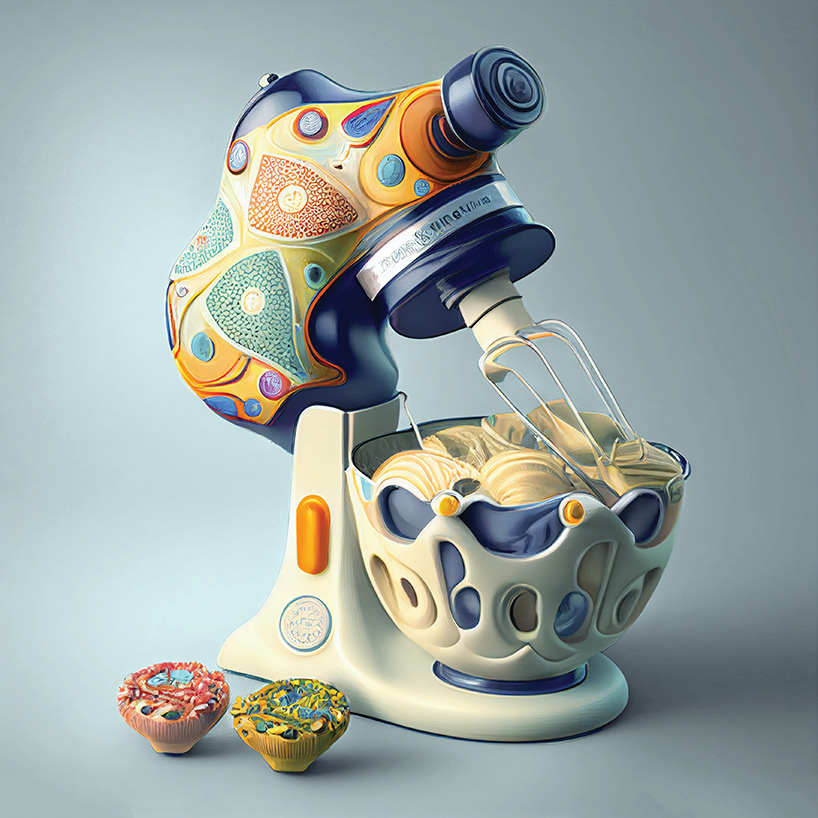
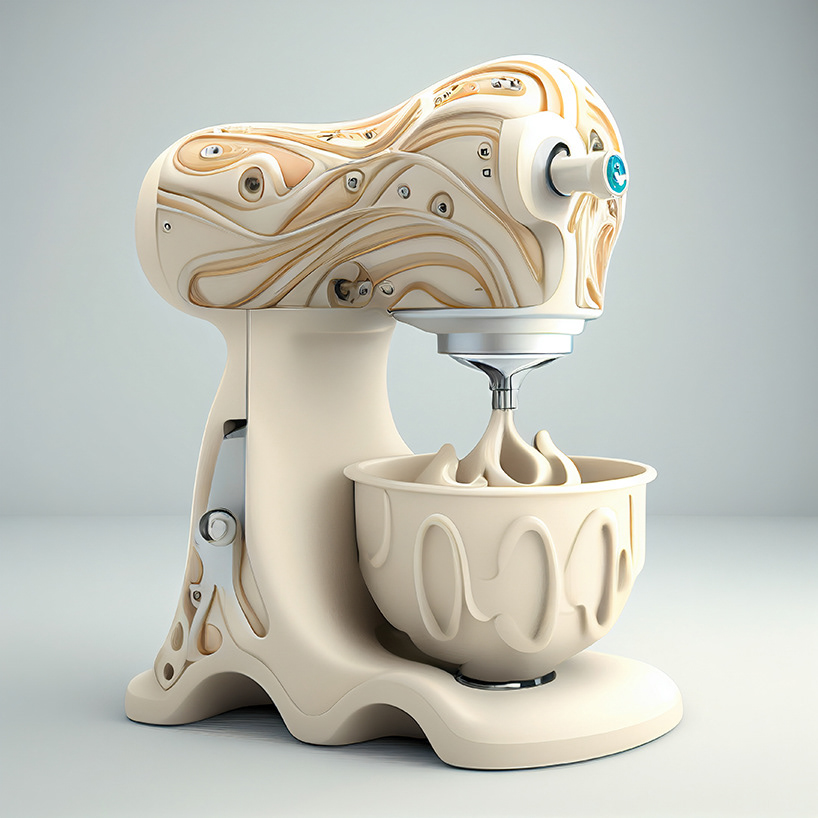
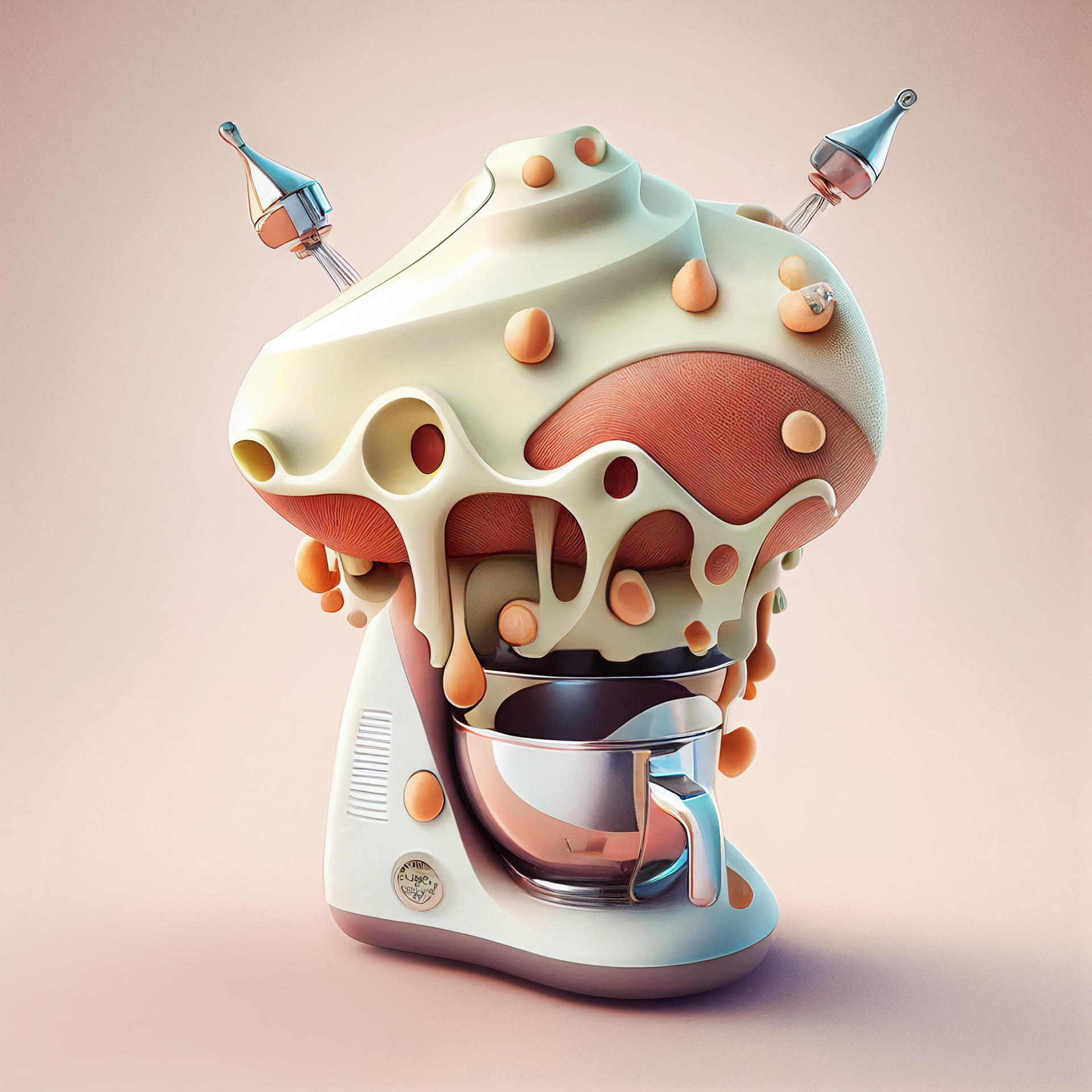
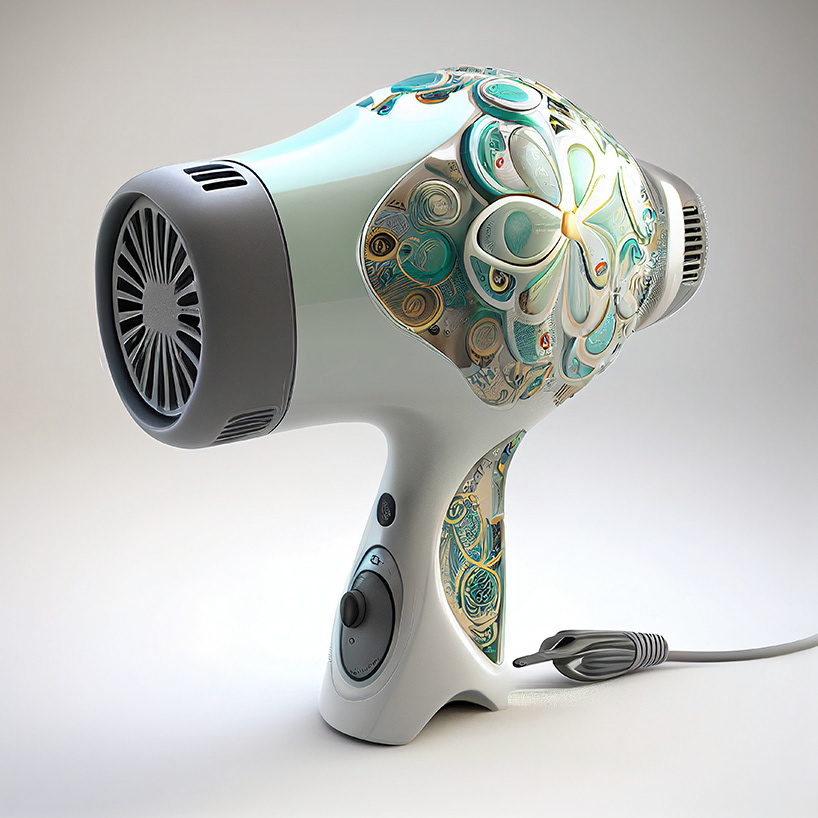
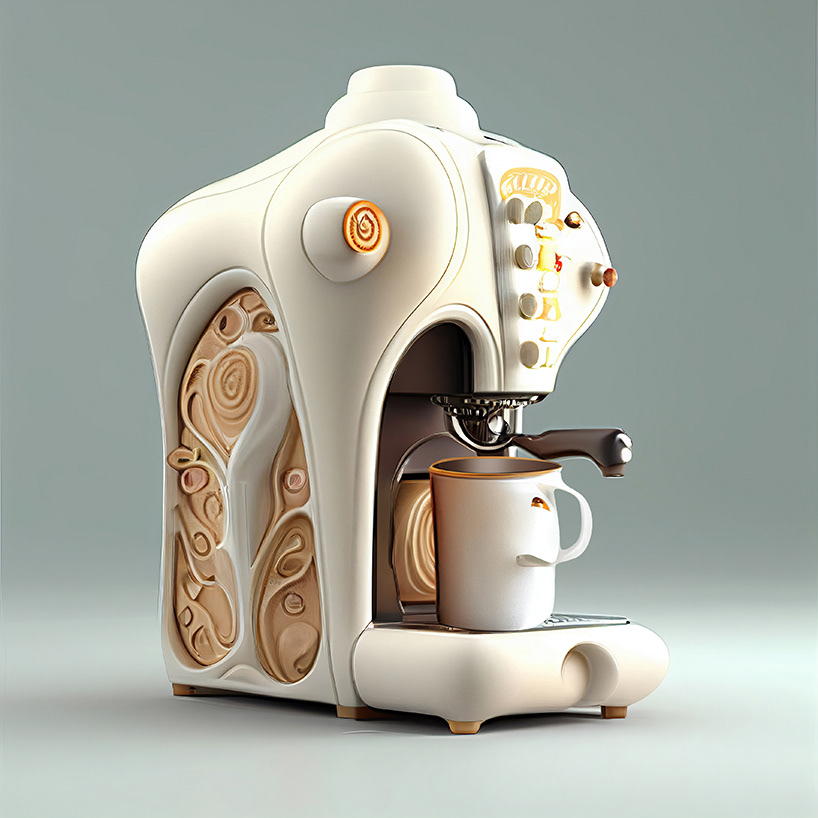
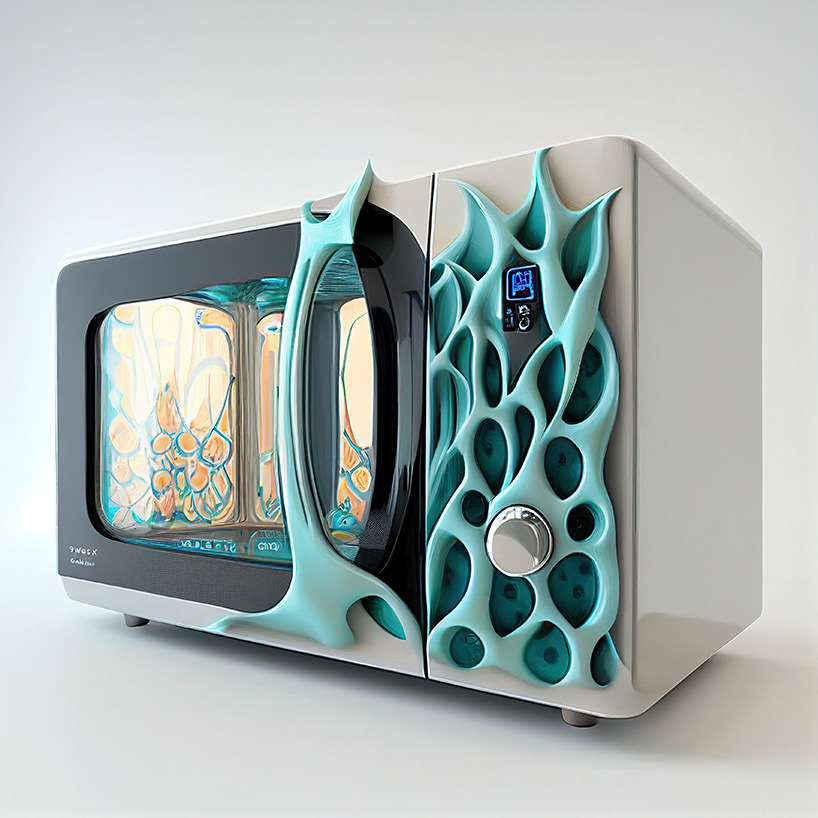
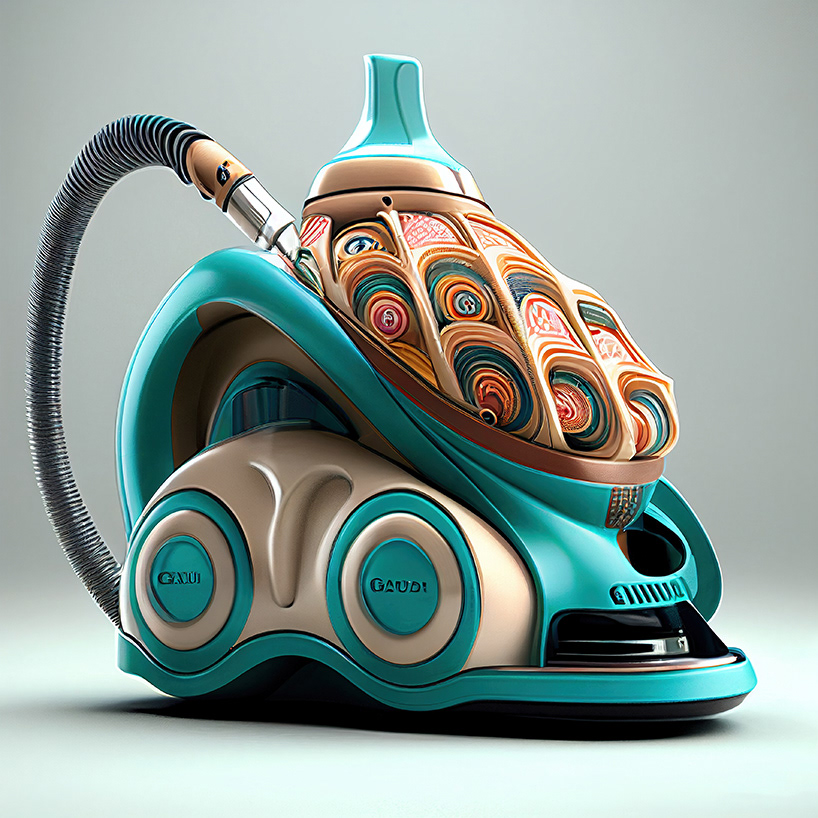
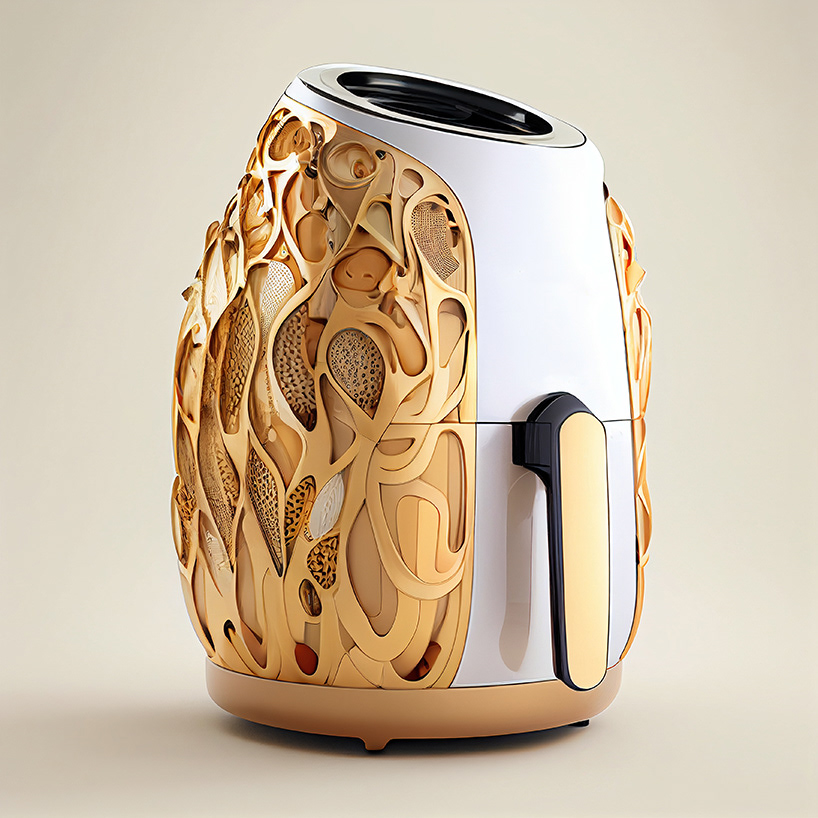
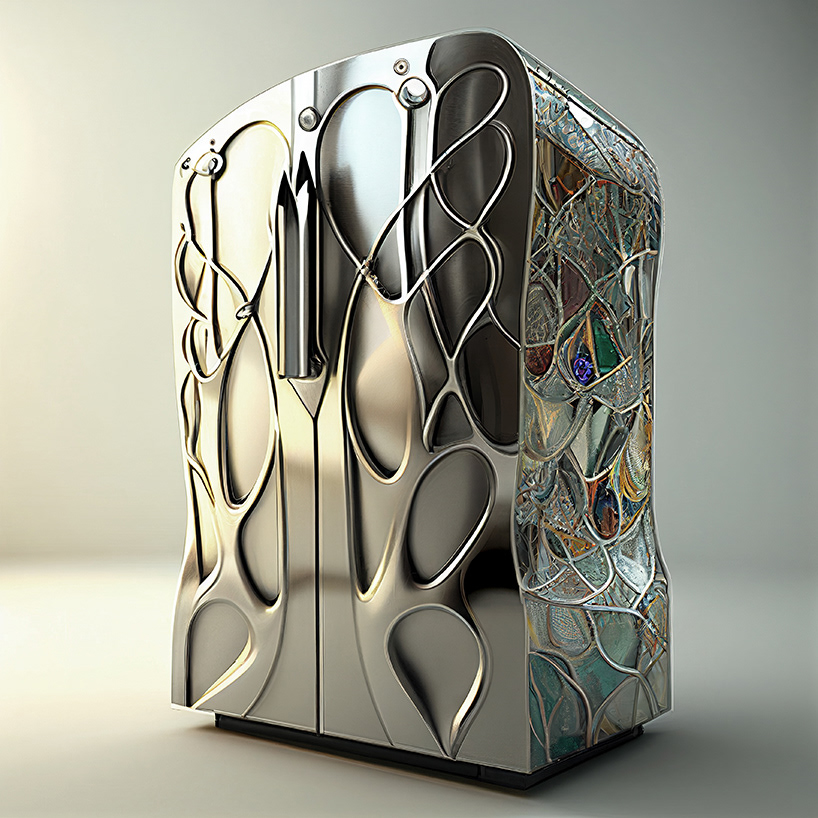
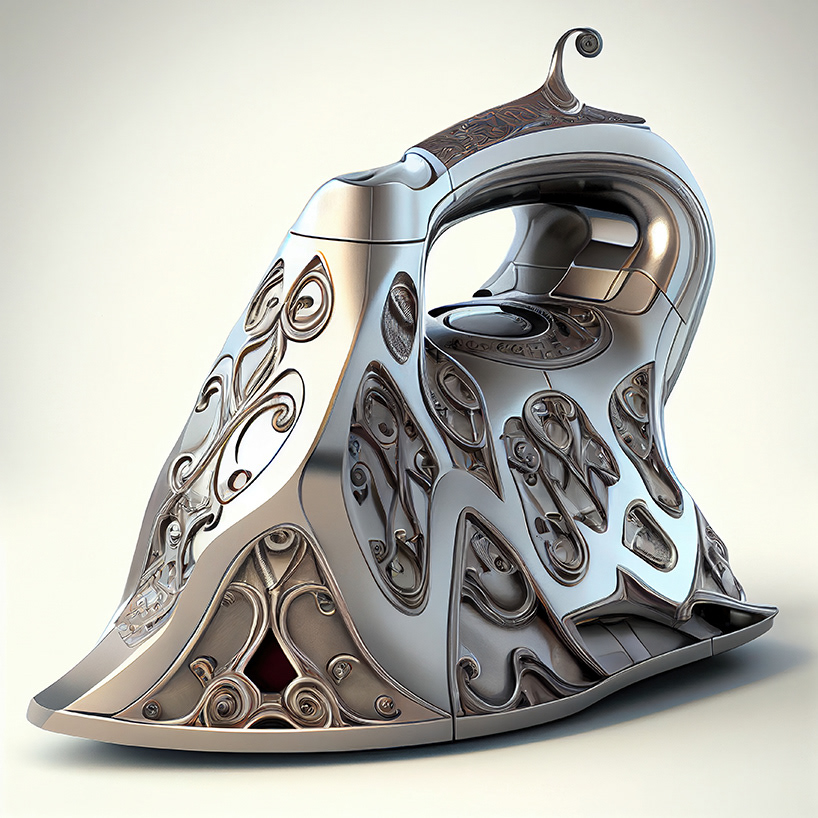
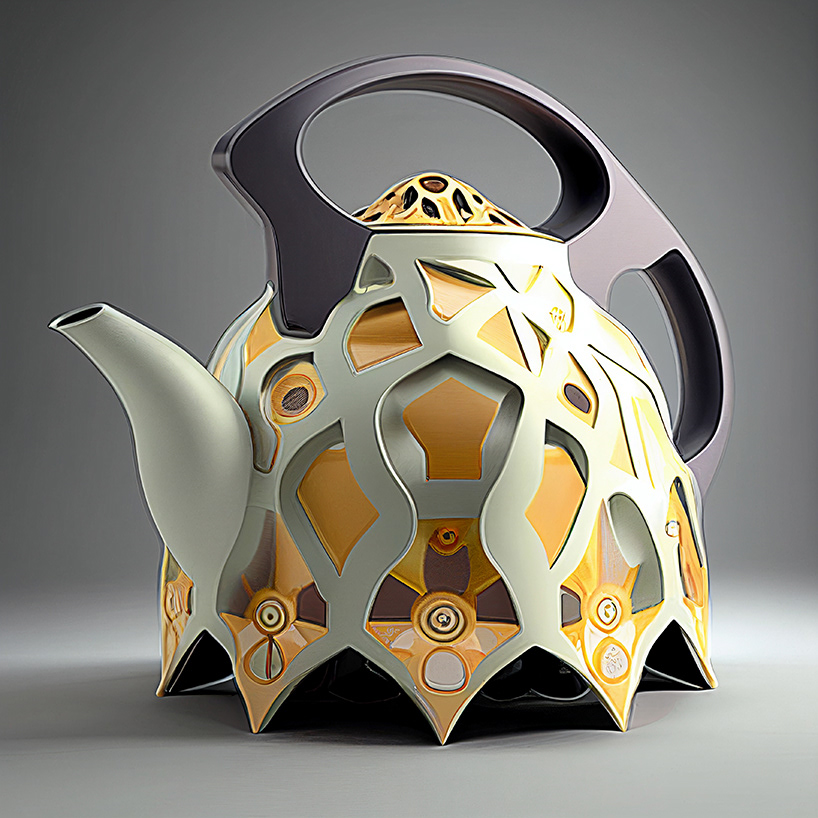
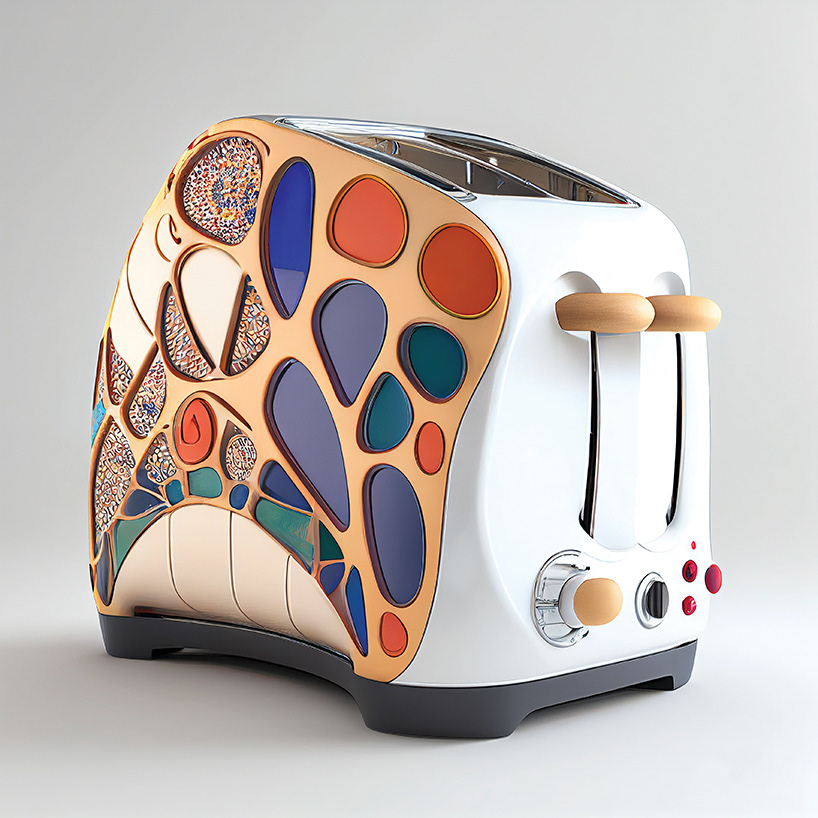
What if graffiti tags influenced the architecture of the buildings they once adorned?
The spray can is available to everybody, a tool for creative expression, to challenge and pose questions. Ideas are created publicly which feed into the collective conscious of the social fabric of society. These tribes are of utmost importance and usually go against social norms. Graffiti is an expression of identity, a democratic outlet for creativity, social connection and achievement. There’s a weird juxtaposition, from being publicly admired as “street art” to criminal charges, fines and jail time.
AI gives us the ability to create images that are in our mind at a rapid pace. What happens when the graffiti tags influence the architecture of the buildings they once adorned?The concept images were conceived using text prompts in Midjourney with a little bit of Photoshop
Full story on Designboom.
Prints available on request.
#design #midjourney #aiartist #art #midjourneyai #photoshop #artificialinspiration #aiart #aiartcommunity #midjourneyart
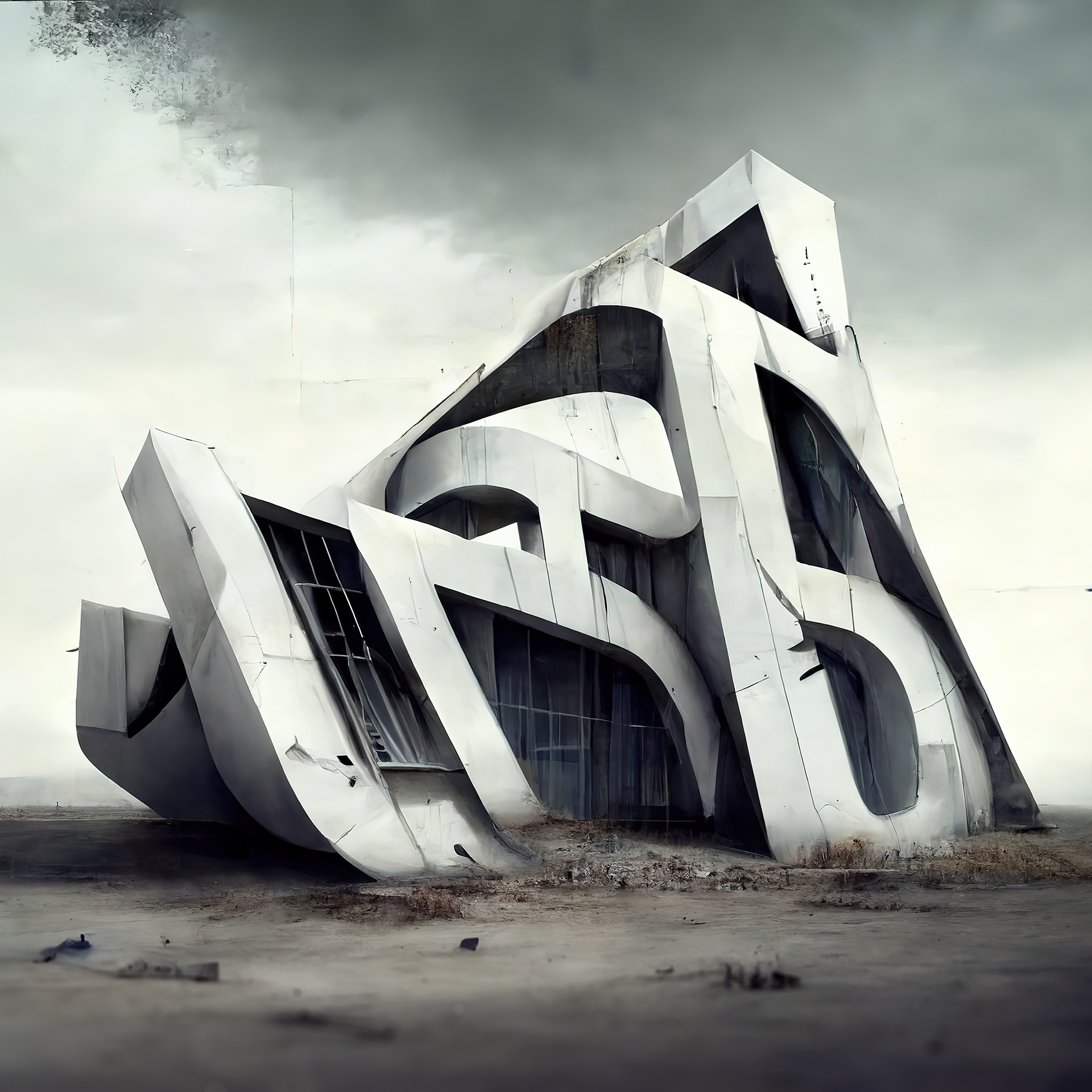
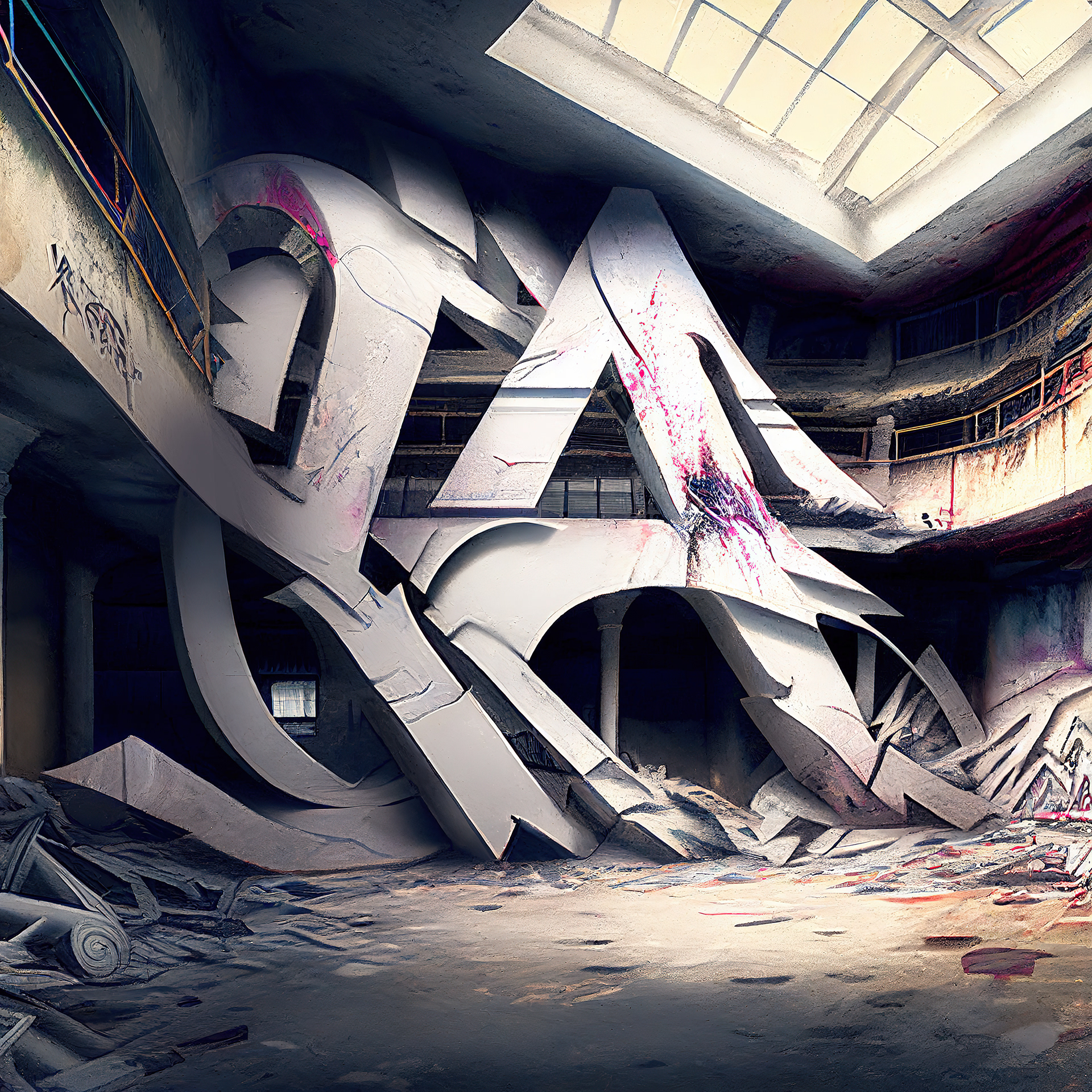
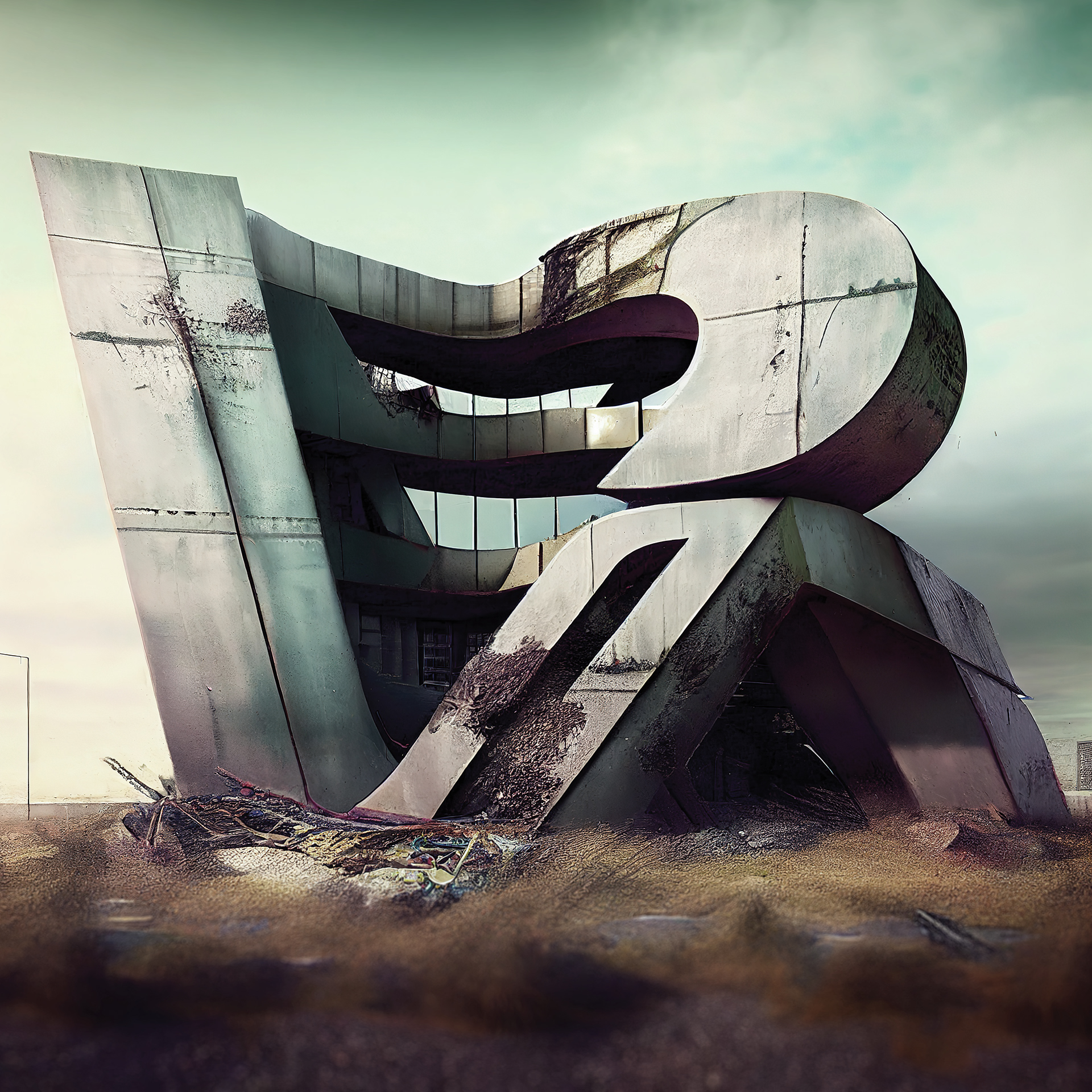
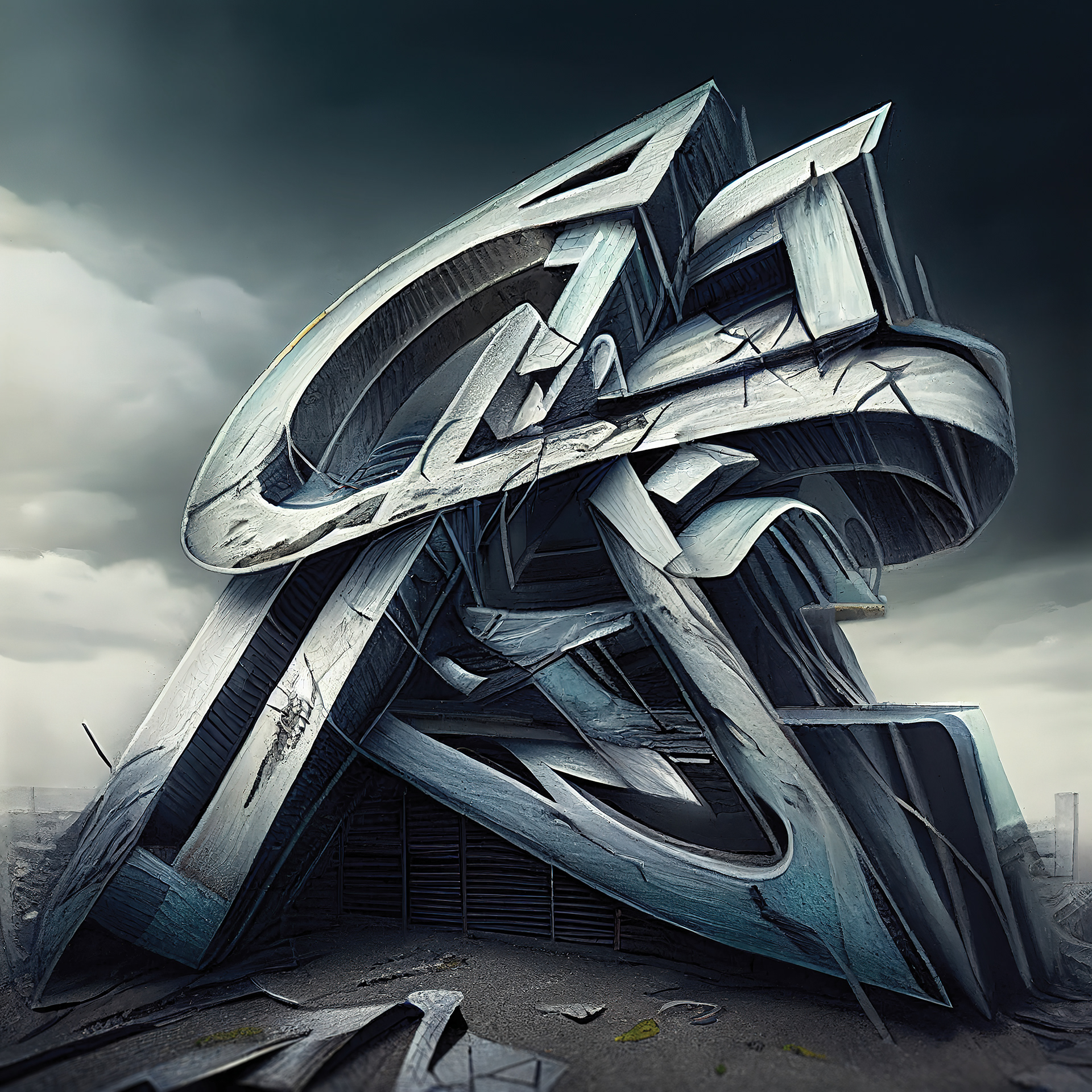
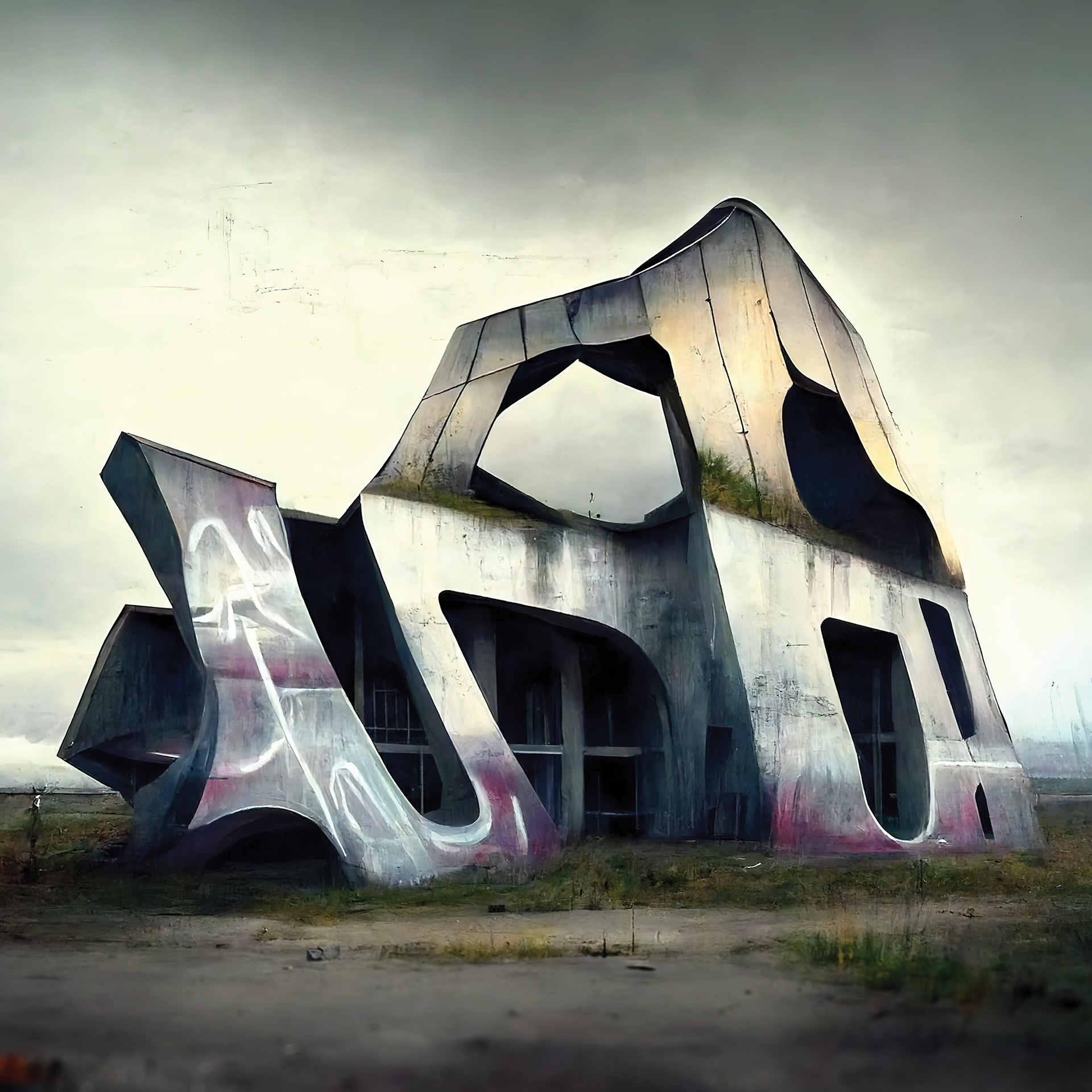
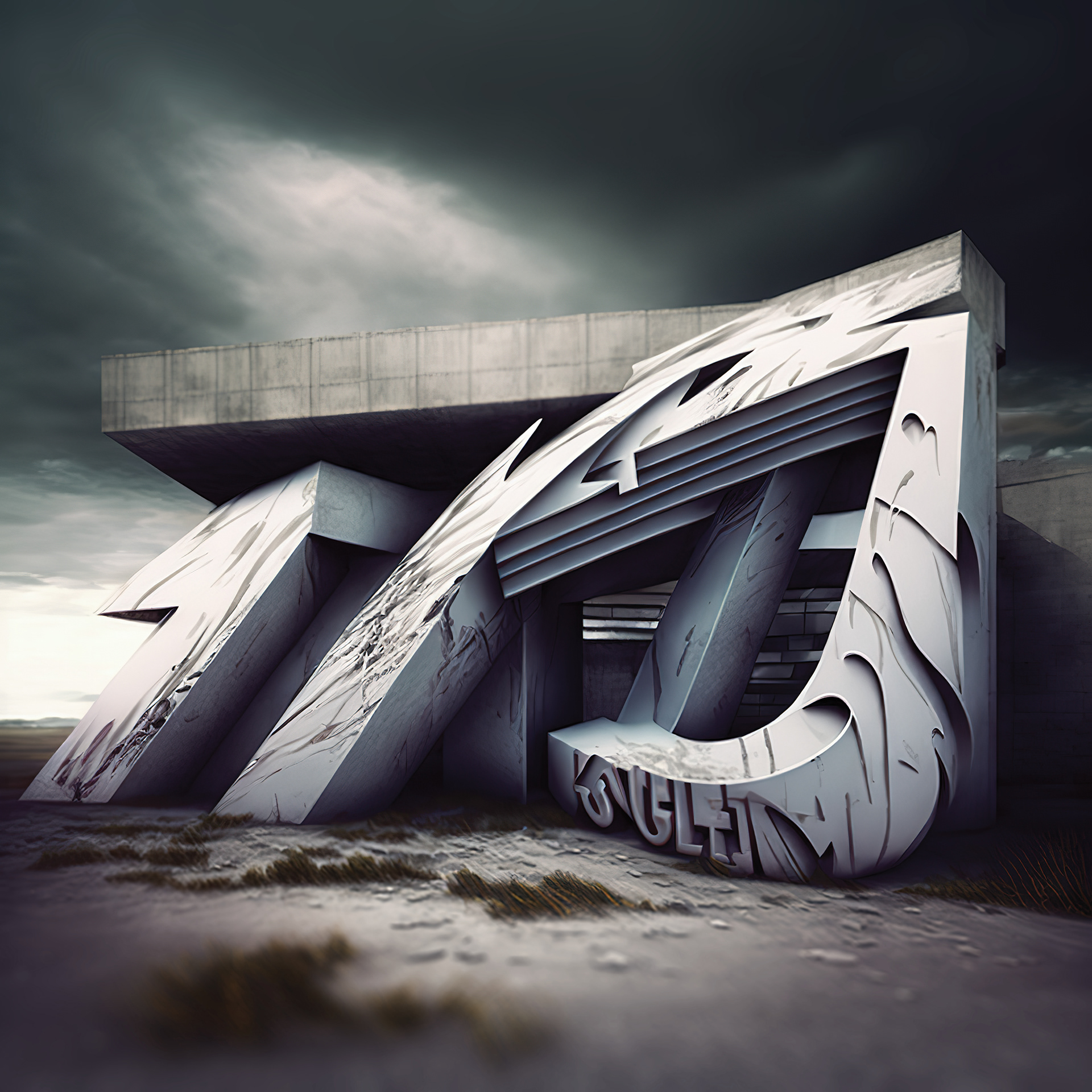
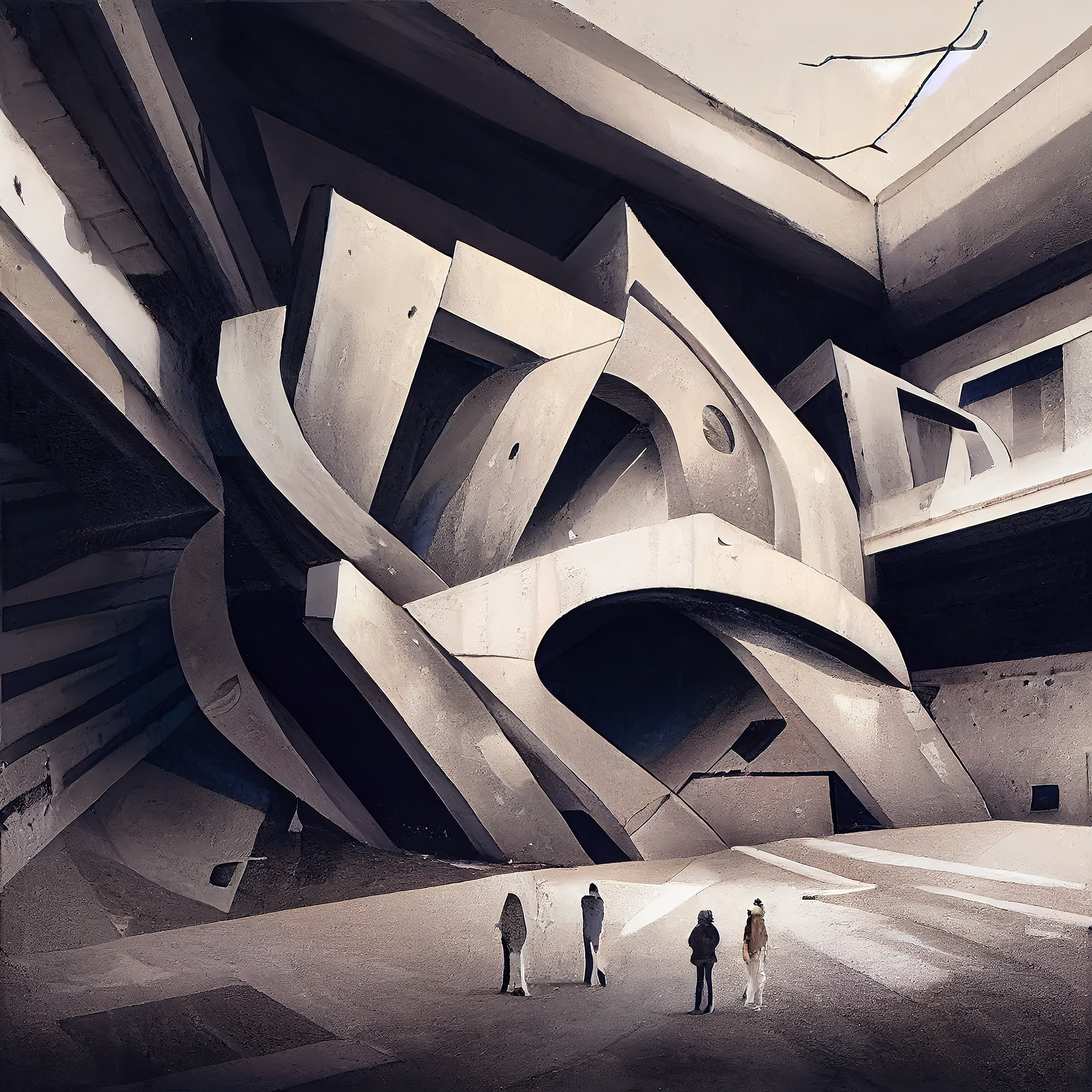
101 Midjourney Prompt Secrets
Packed with prompt tips for anyone interested in creating visually striking AI Art in Midjourney with ease. Variables within the prompts can be altered to generate new and unique images. Simply copy and paste the prompts and replace the [variable] with a subject of your choice.

